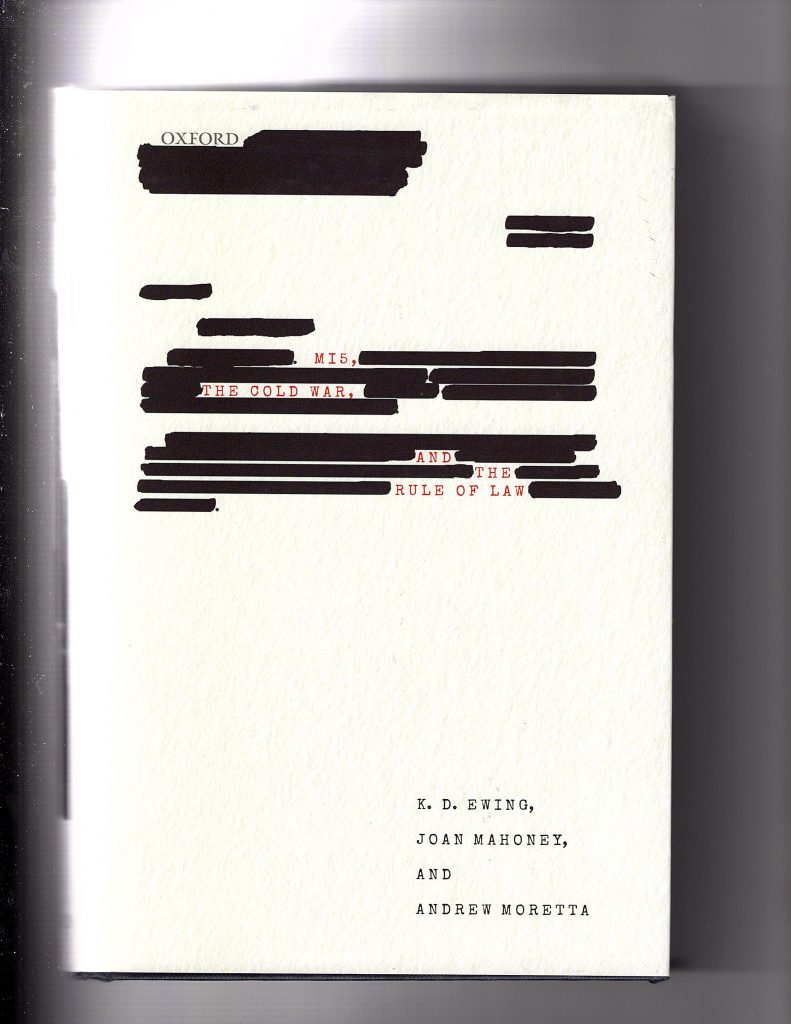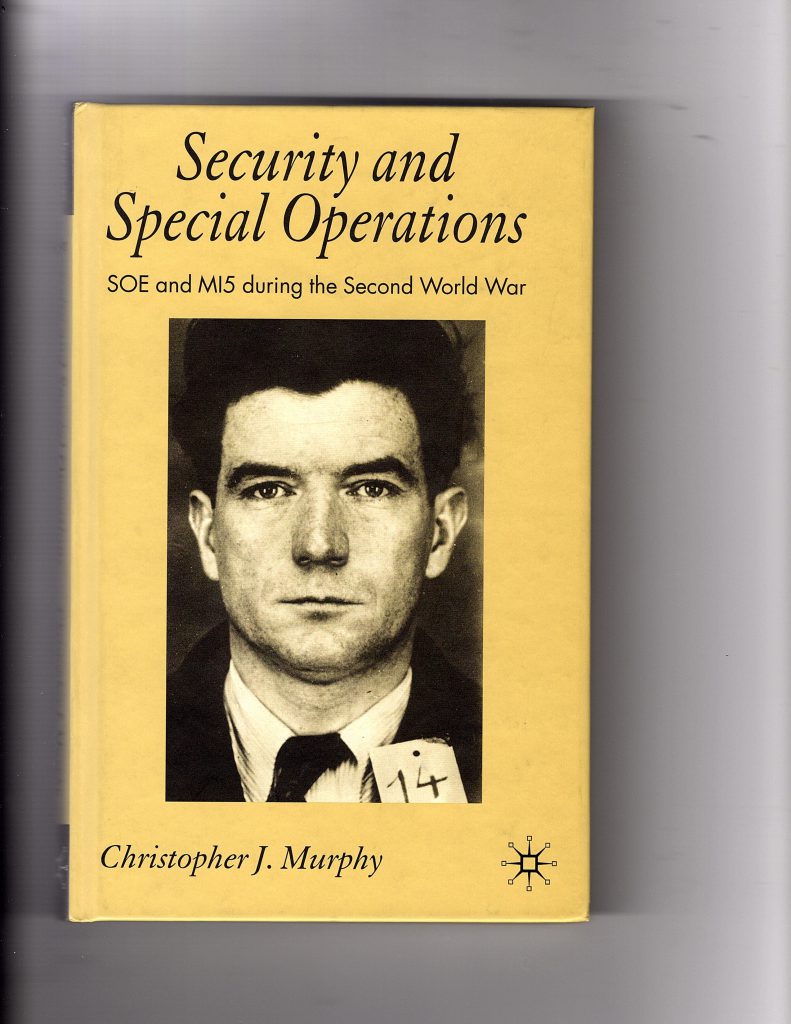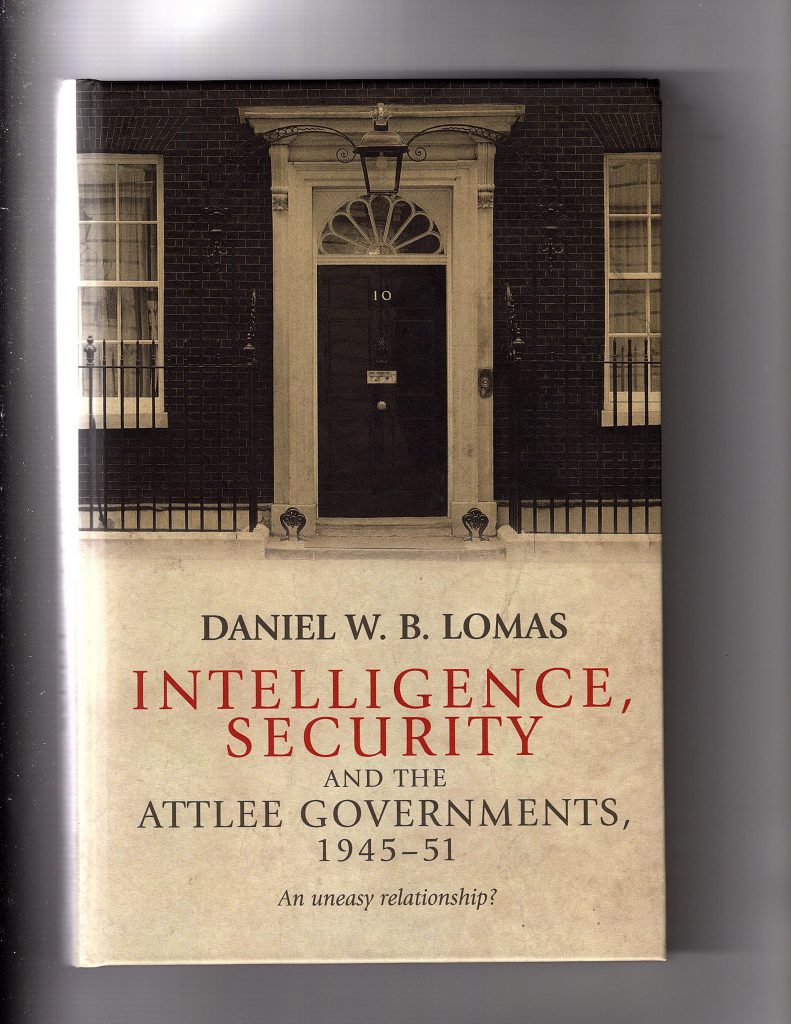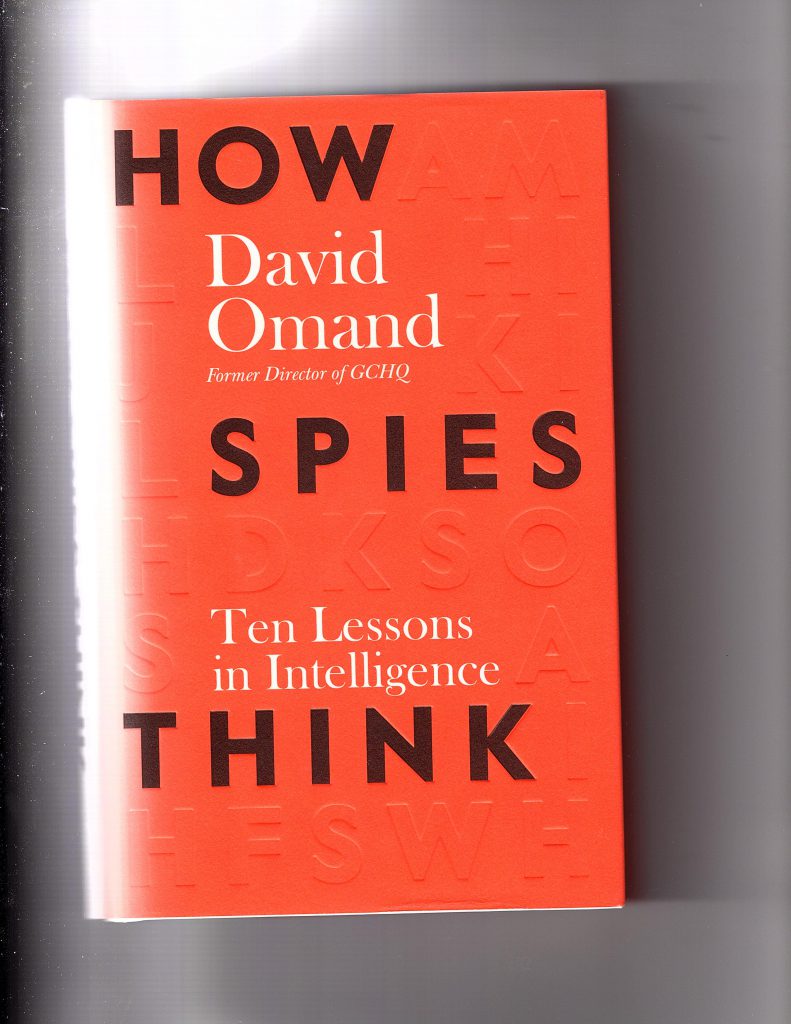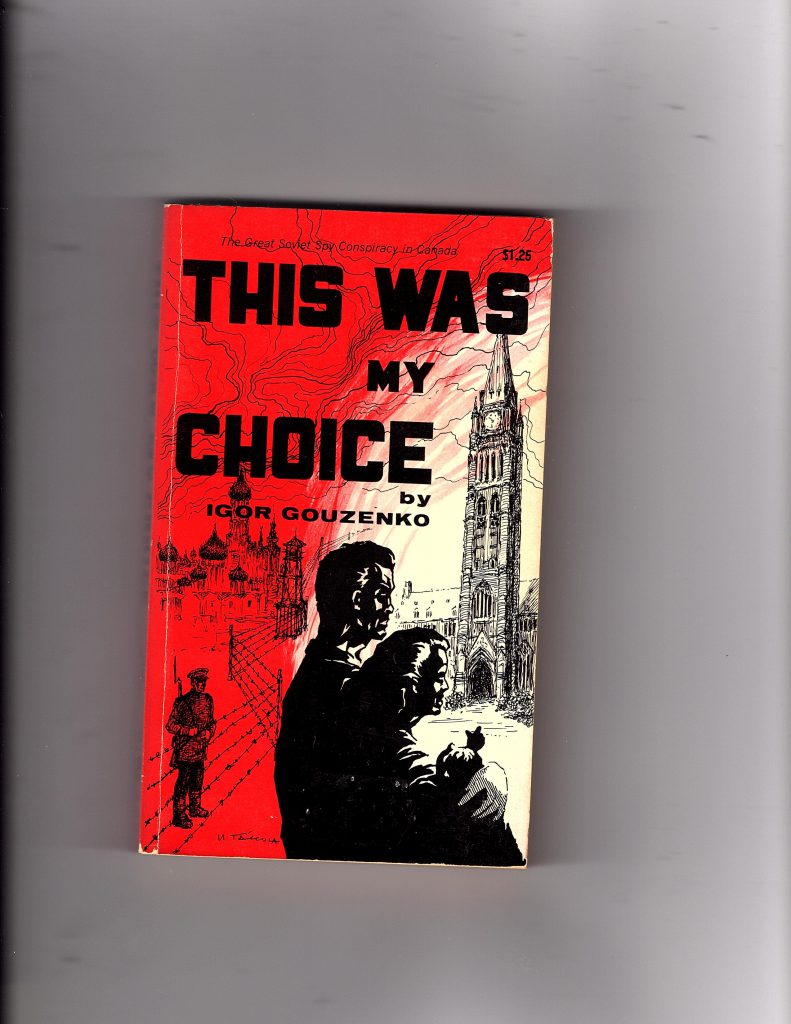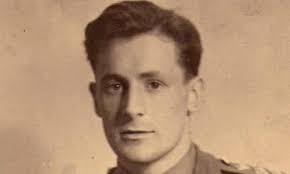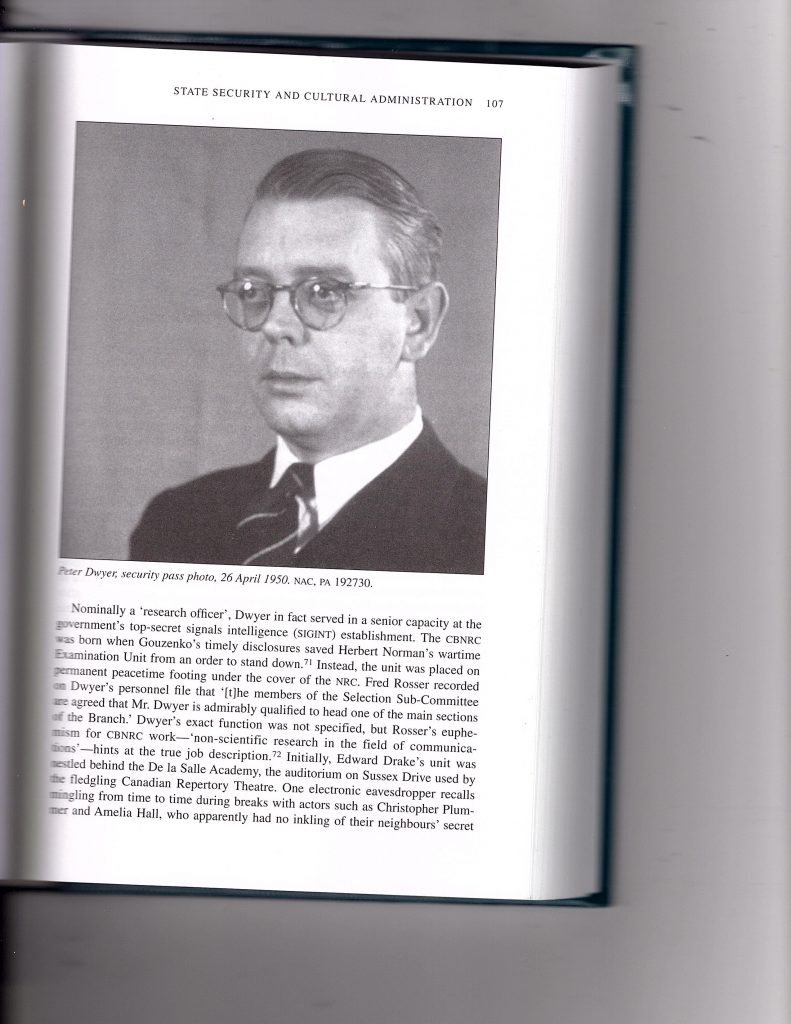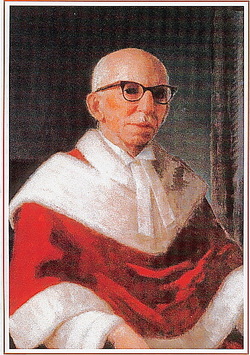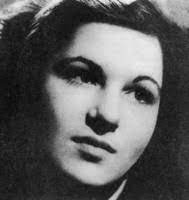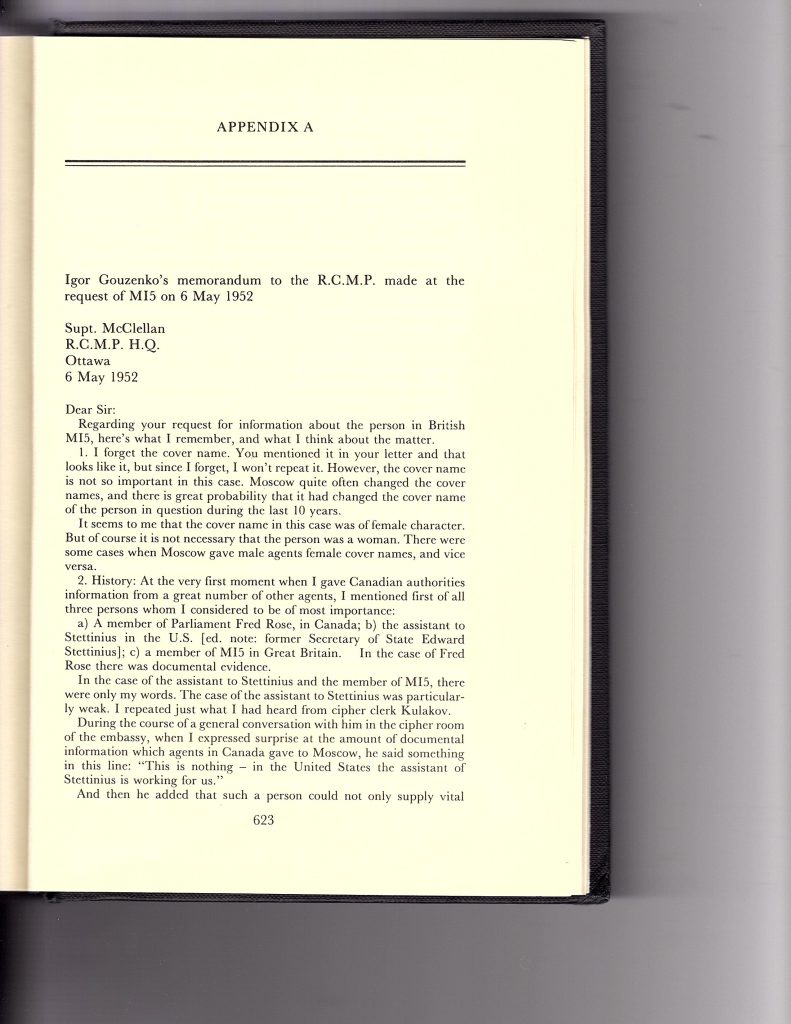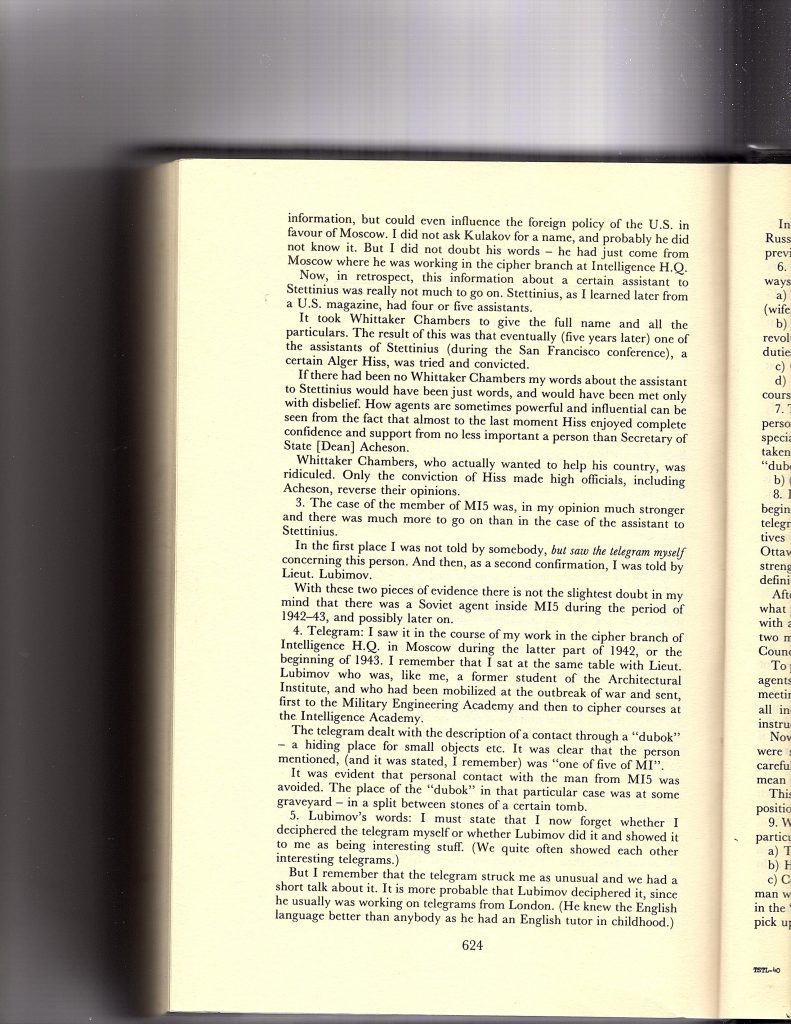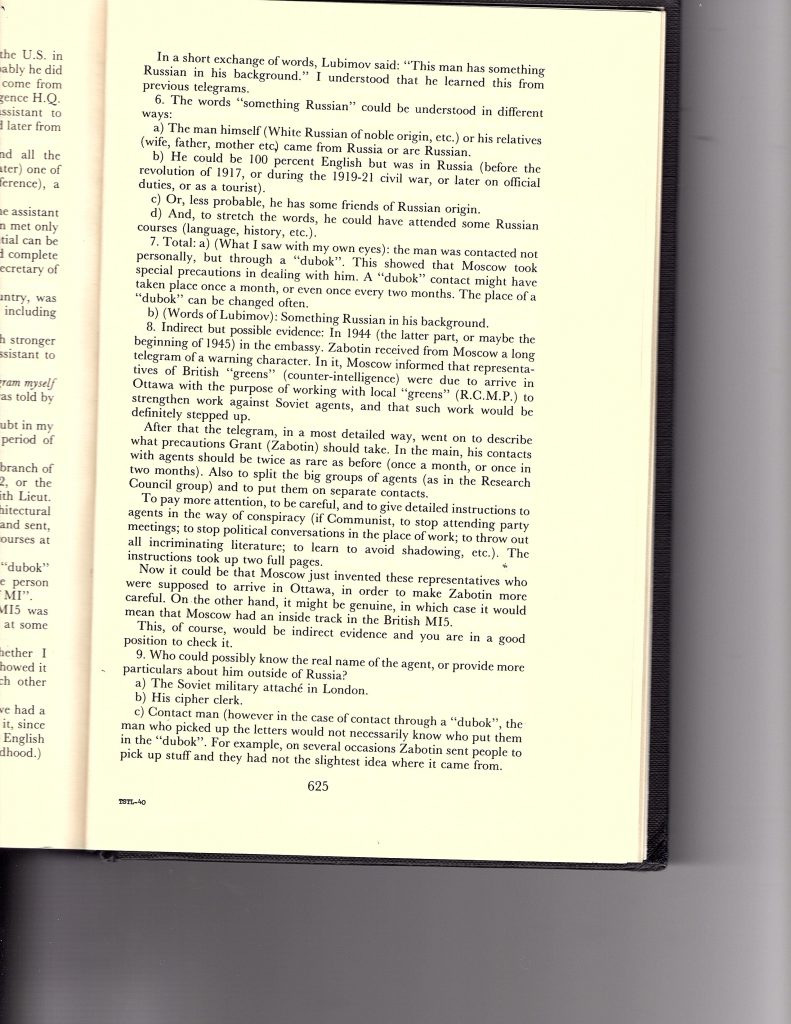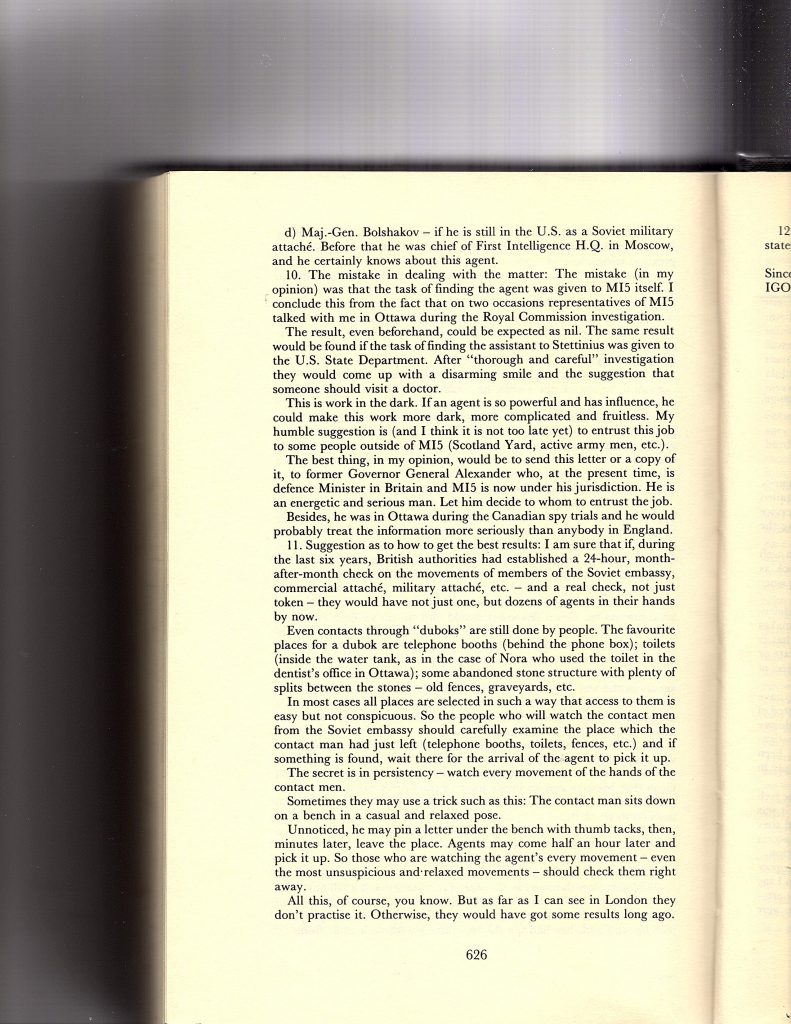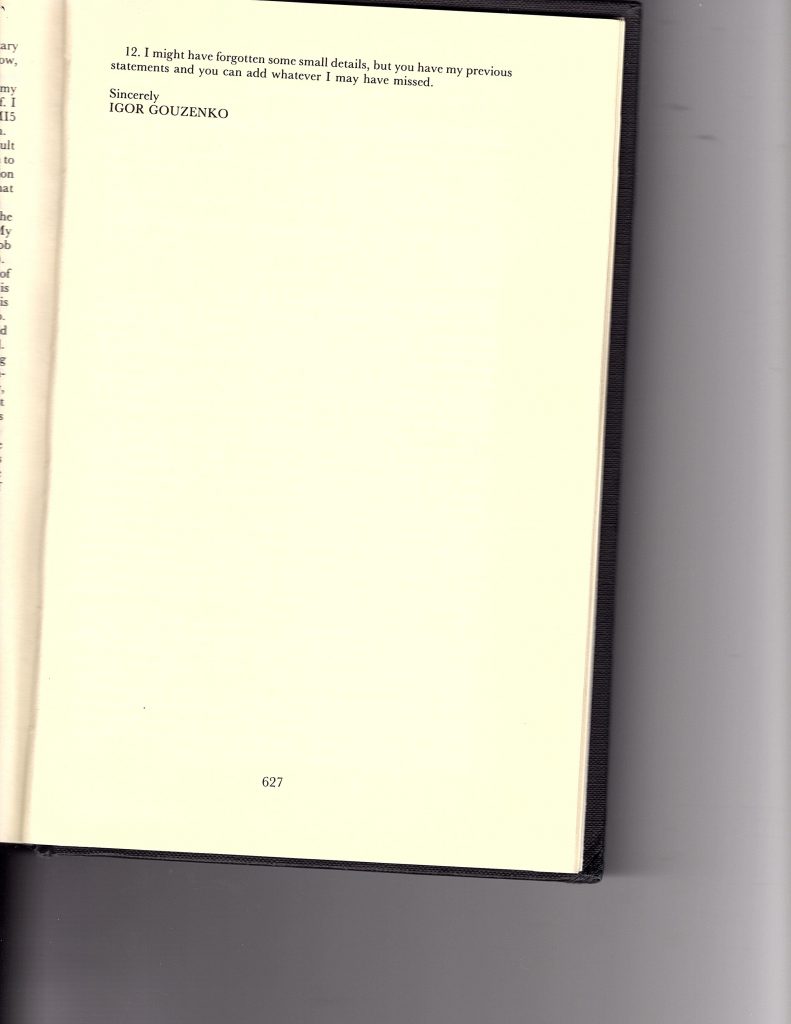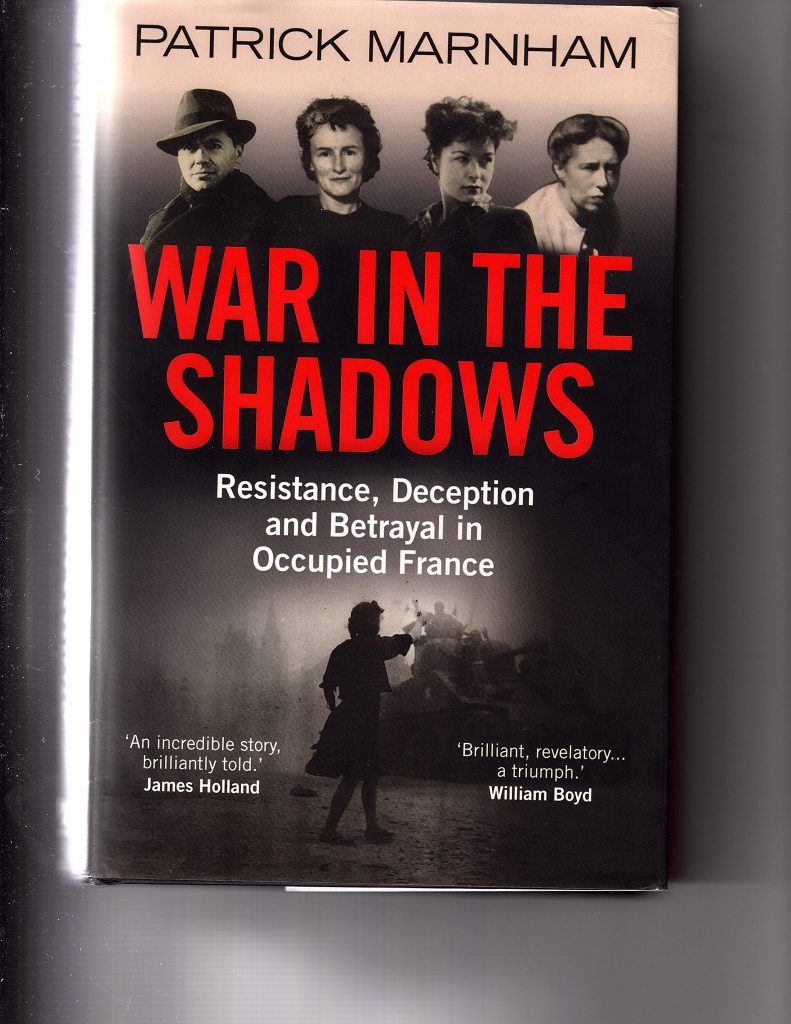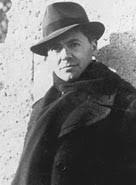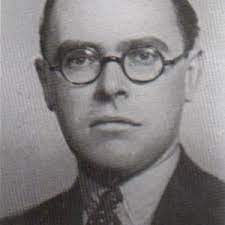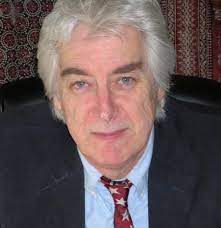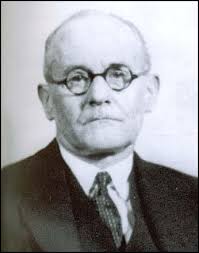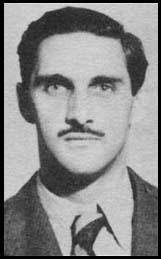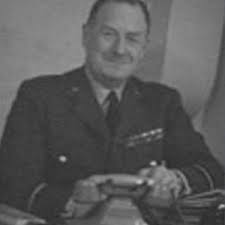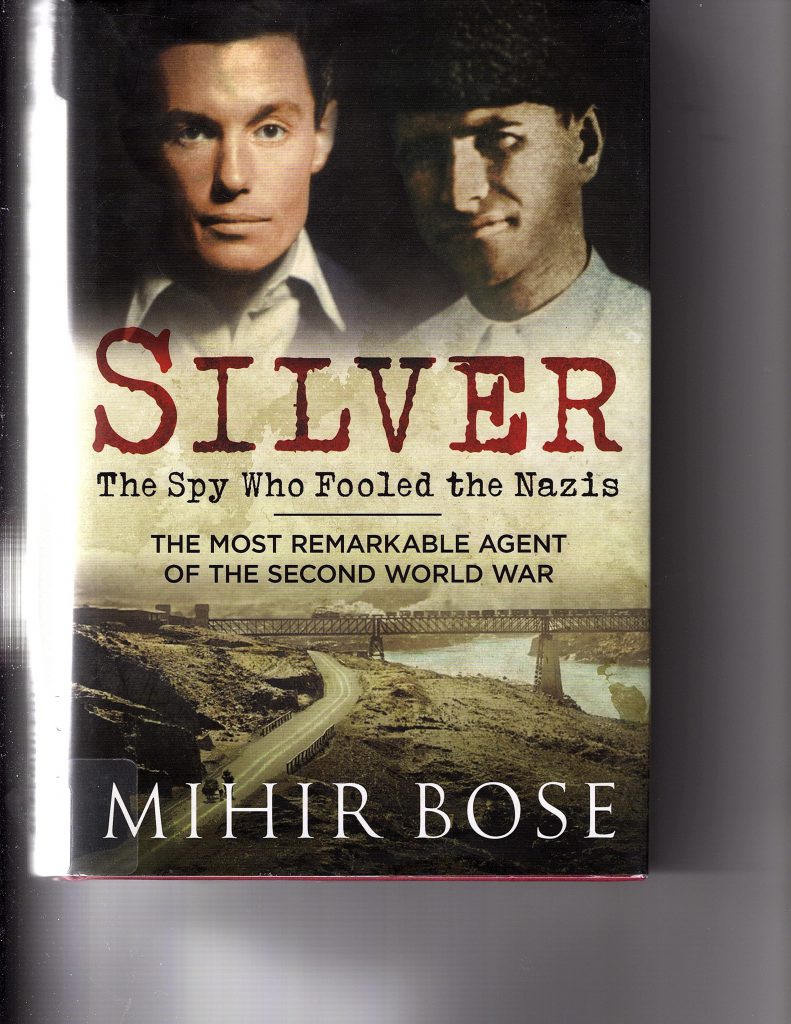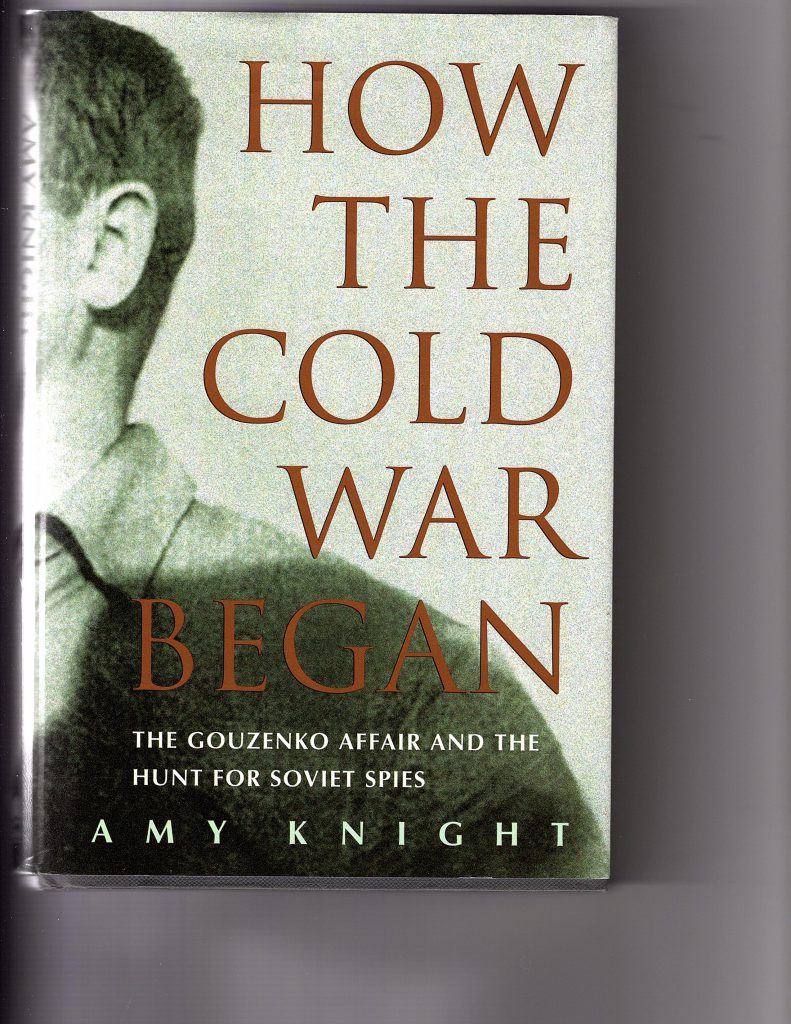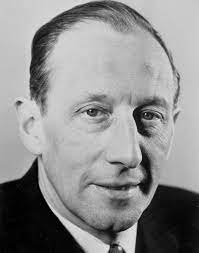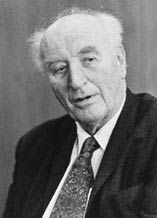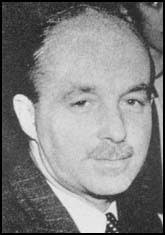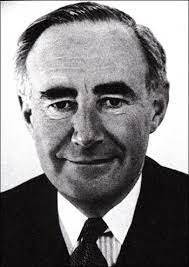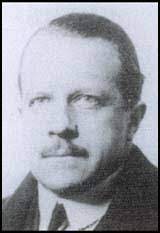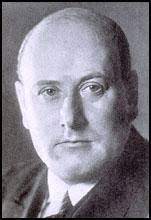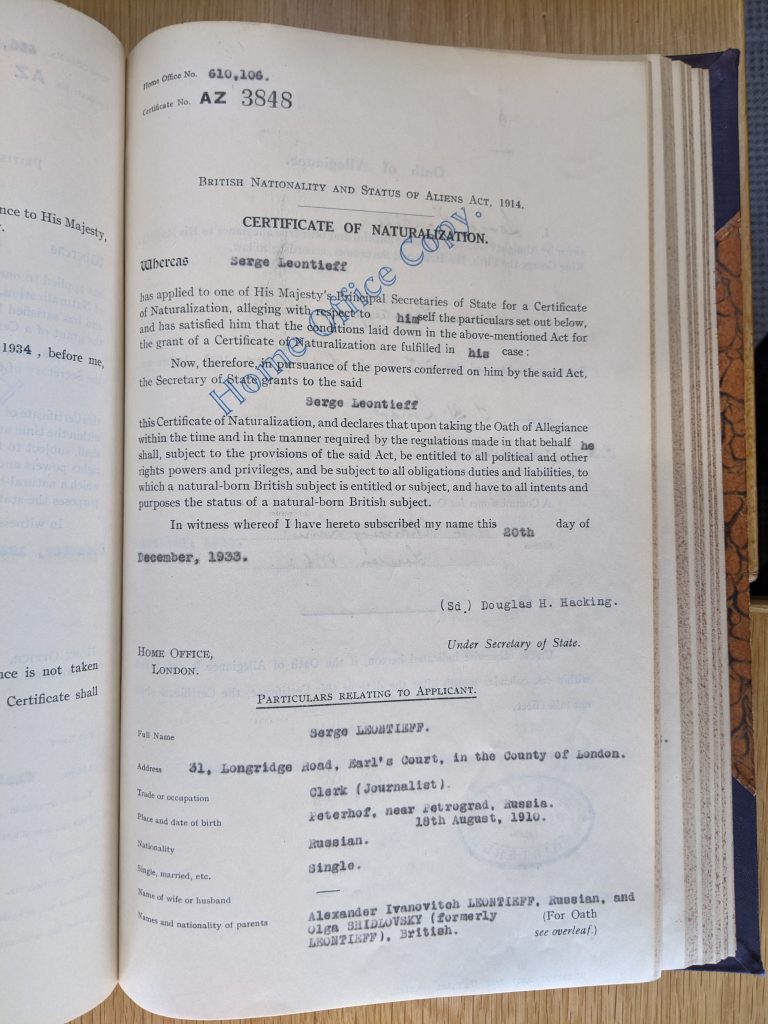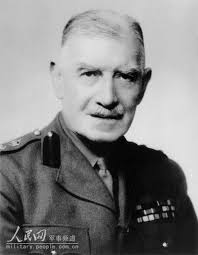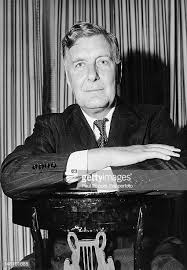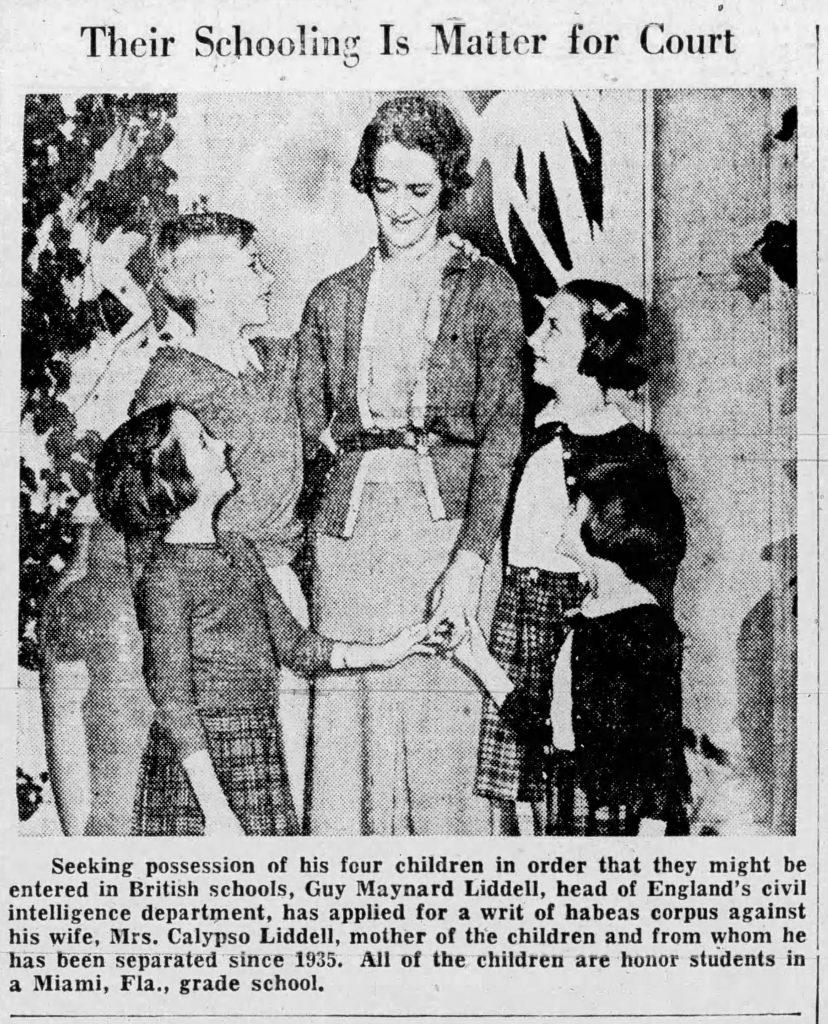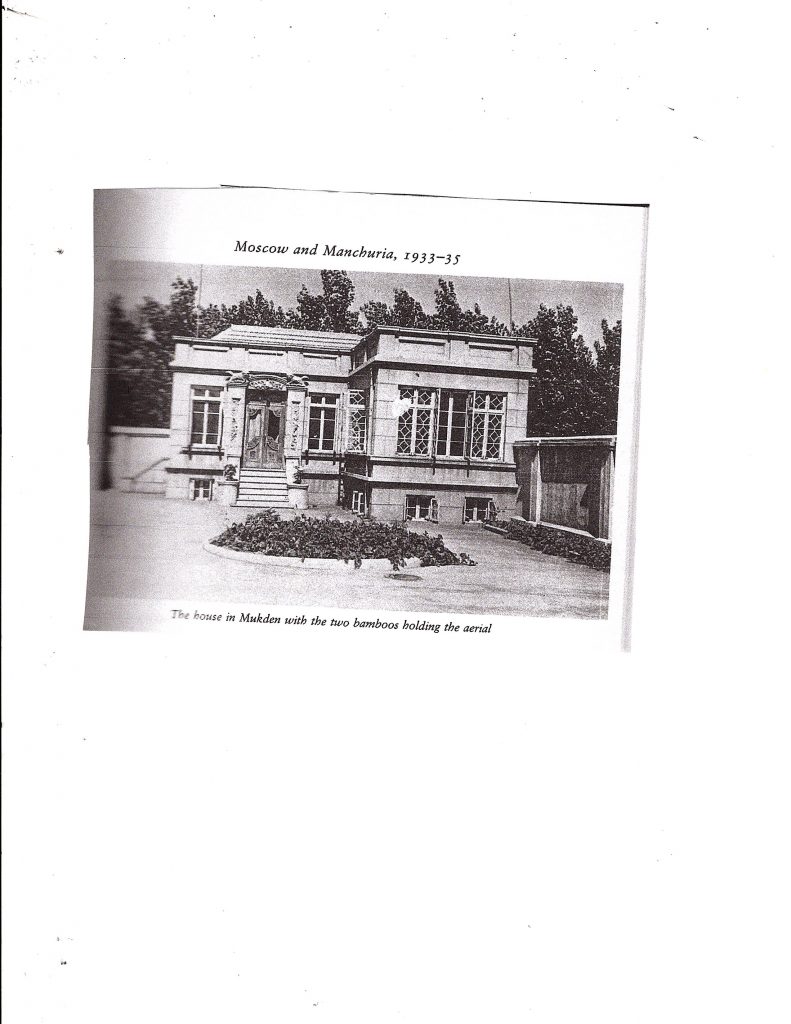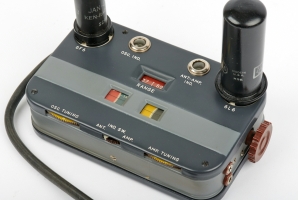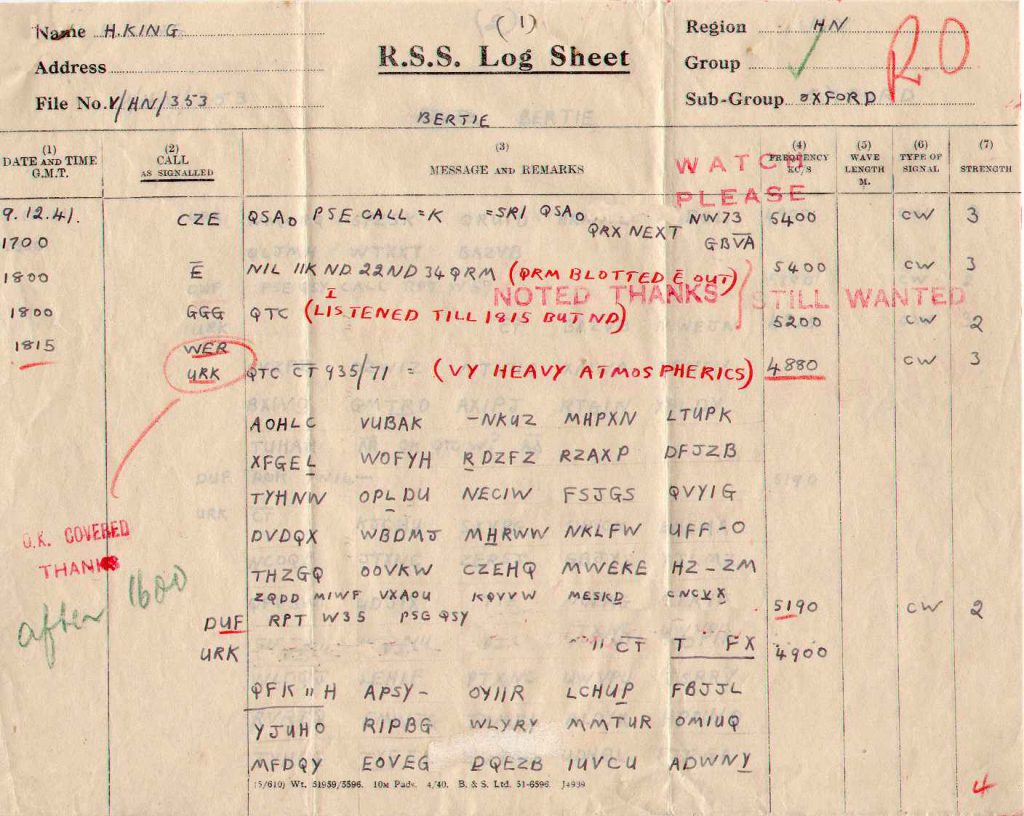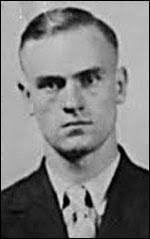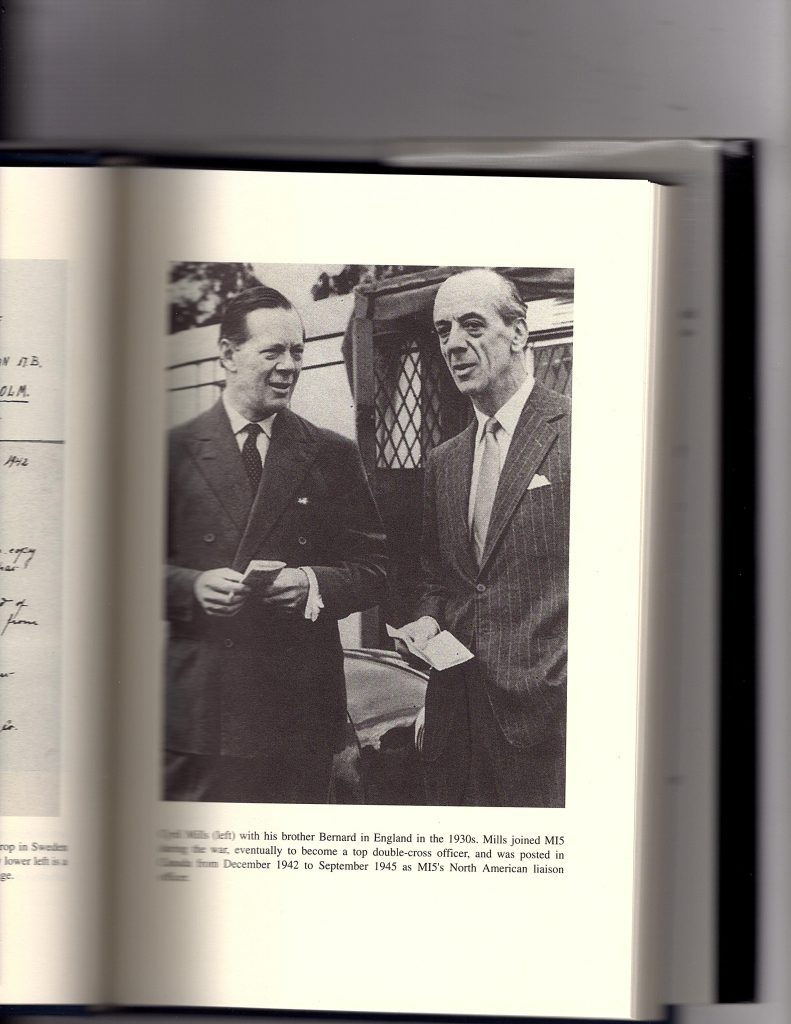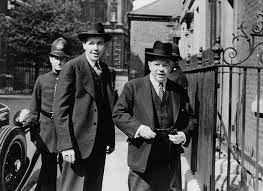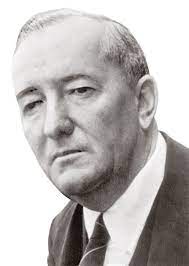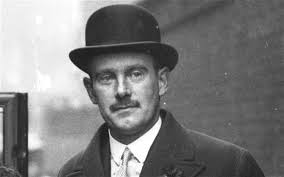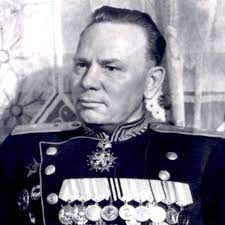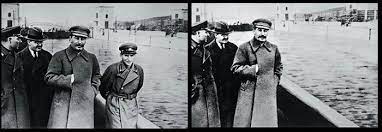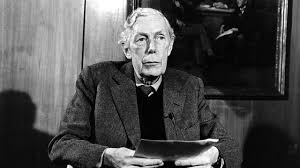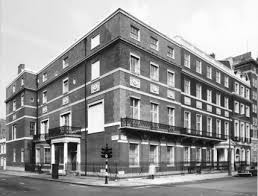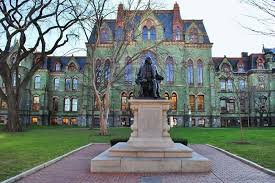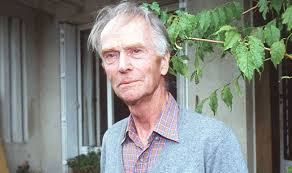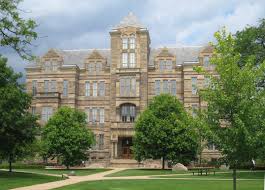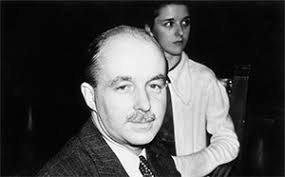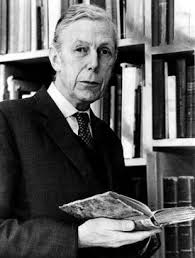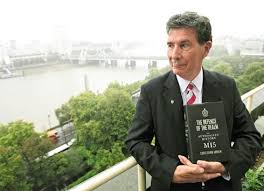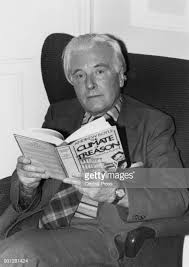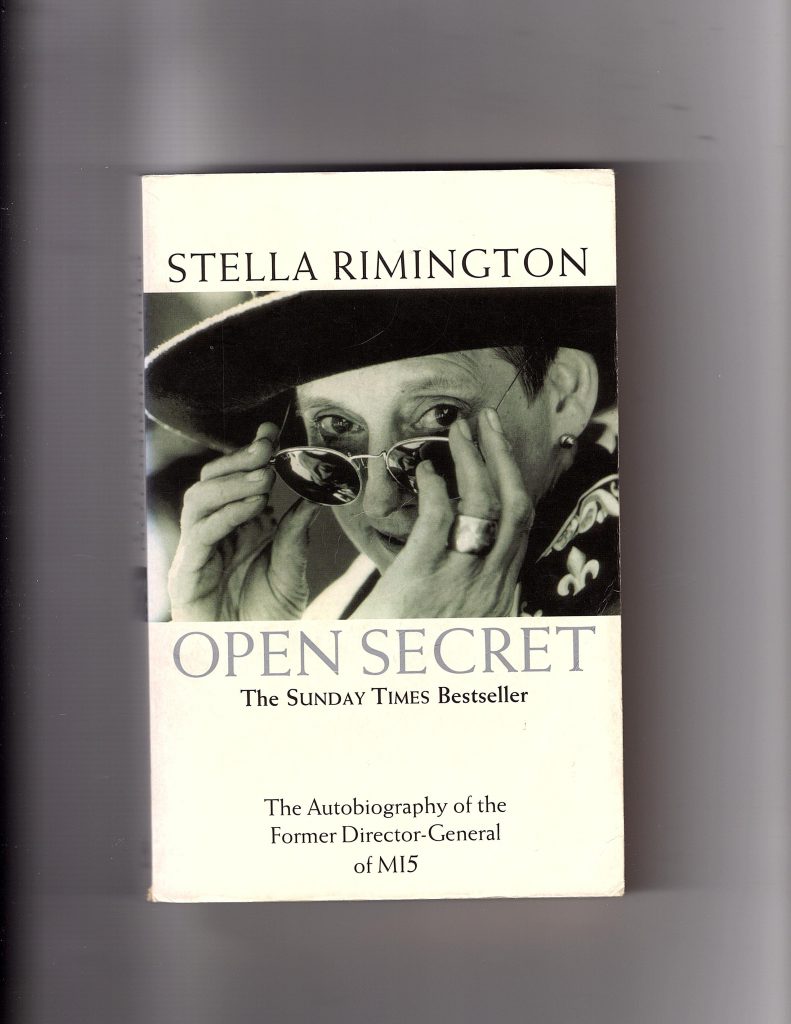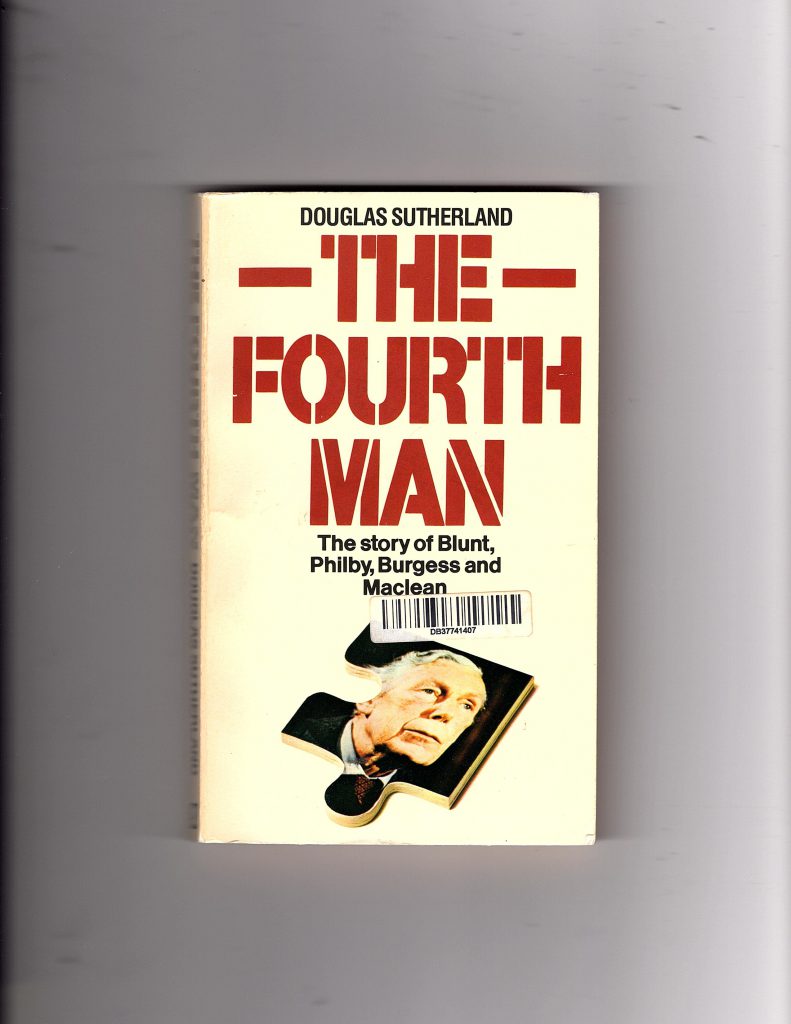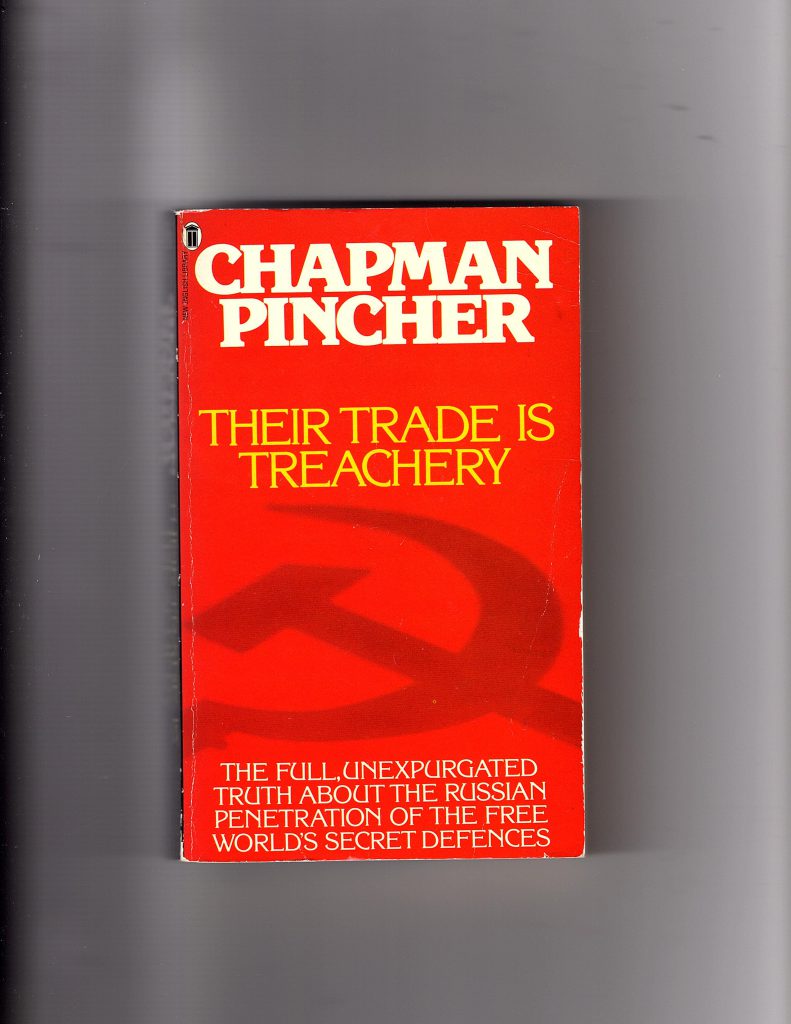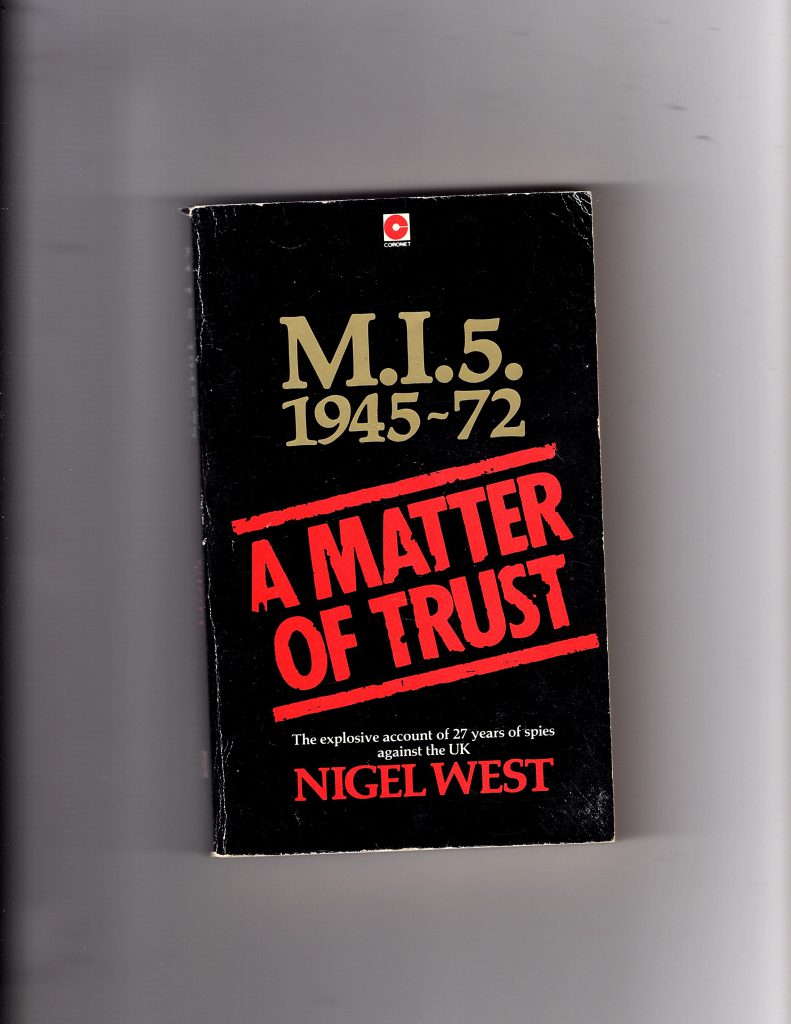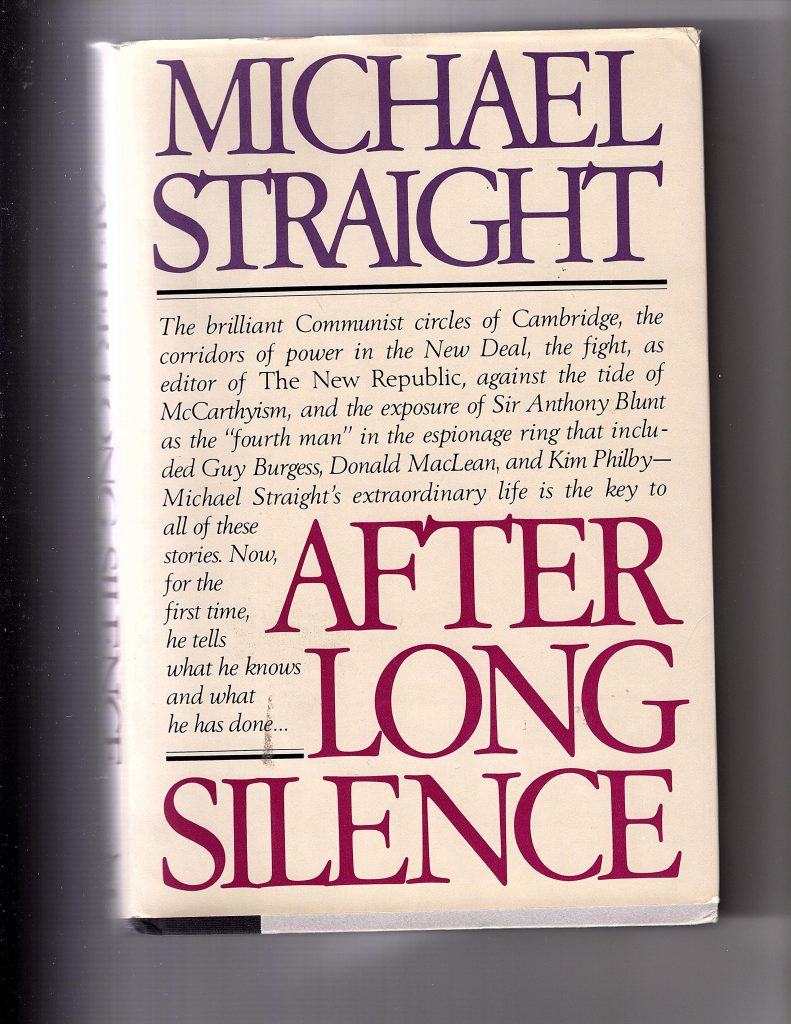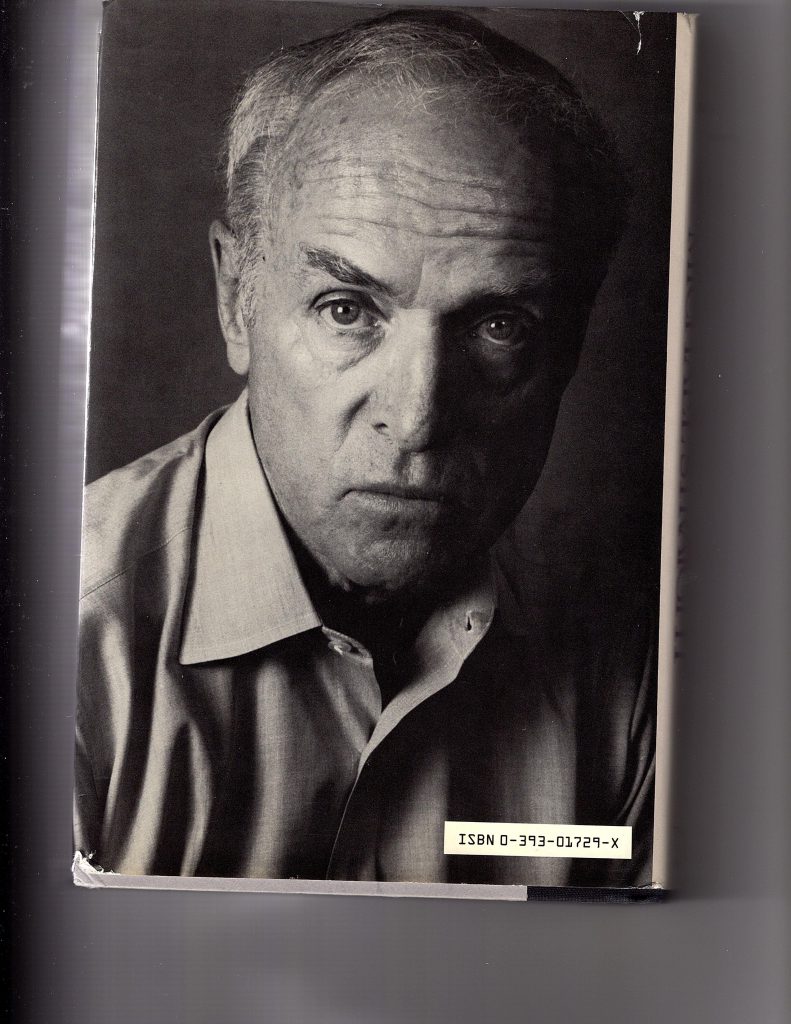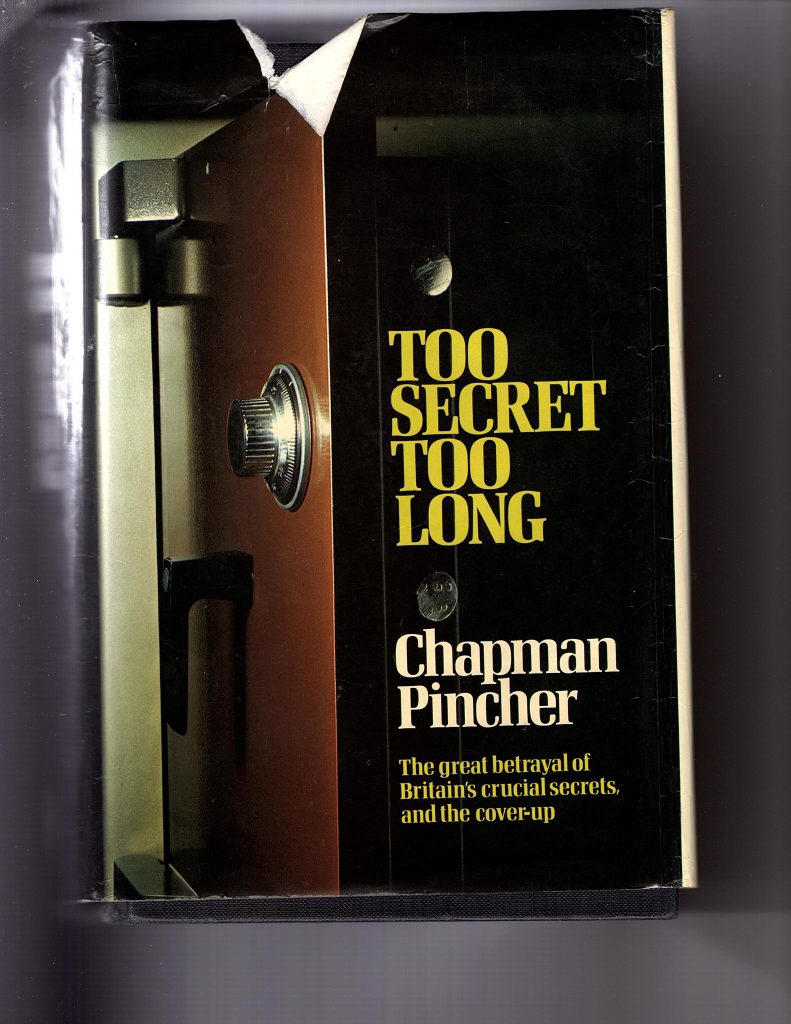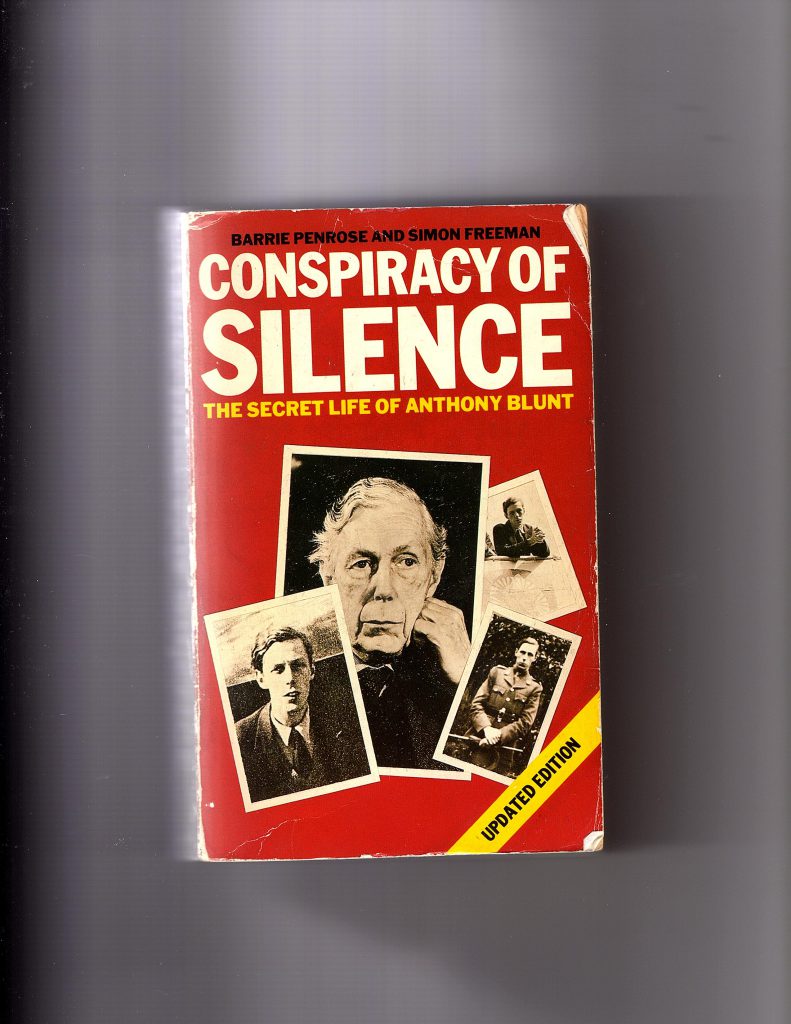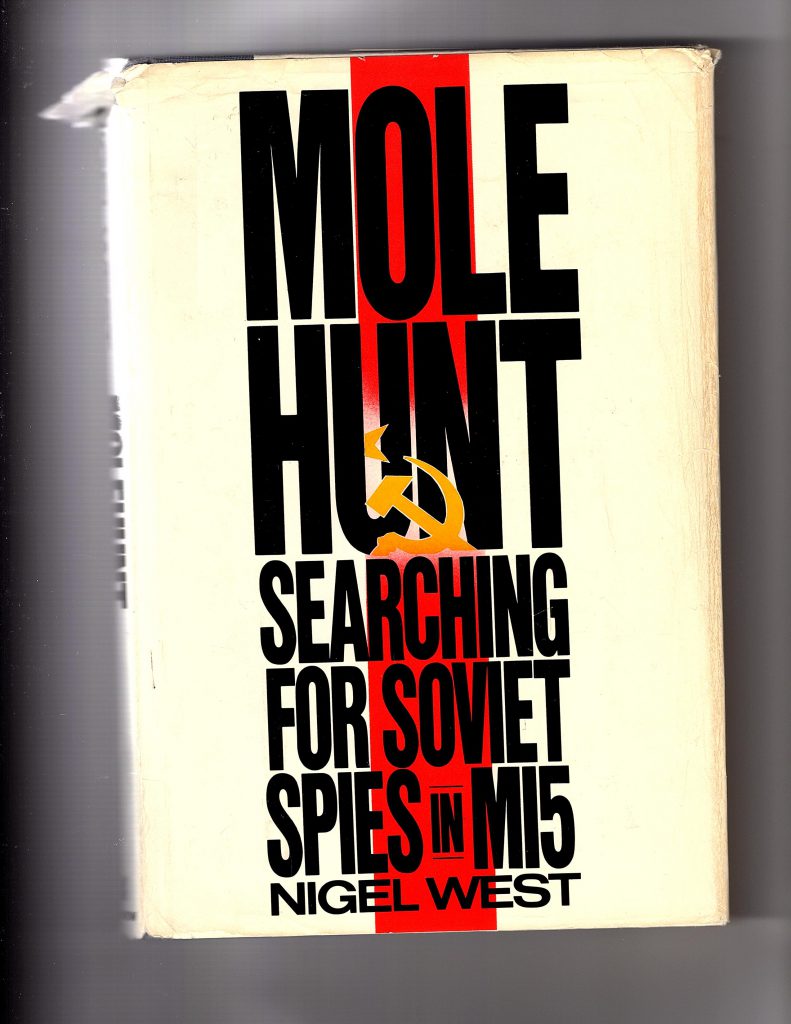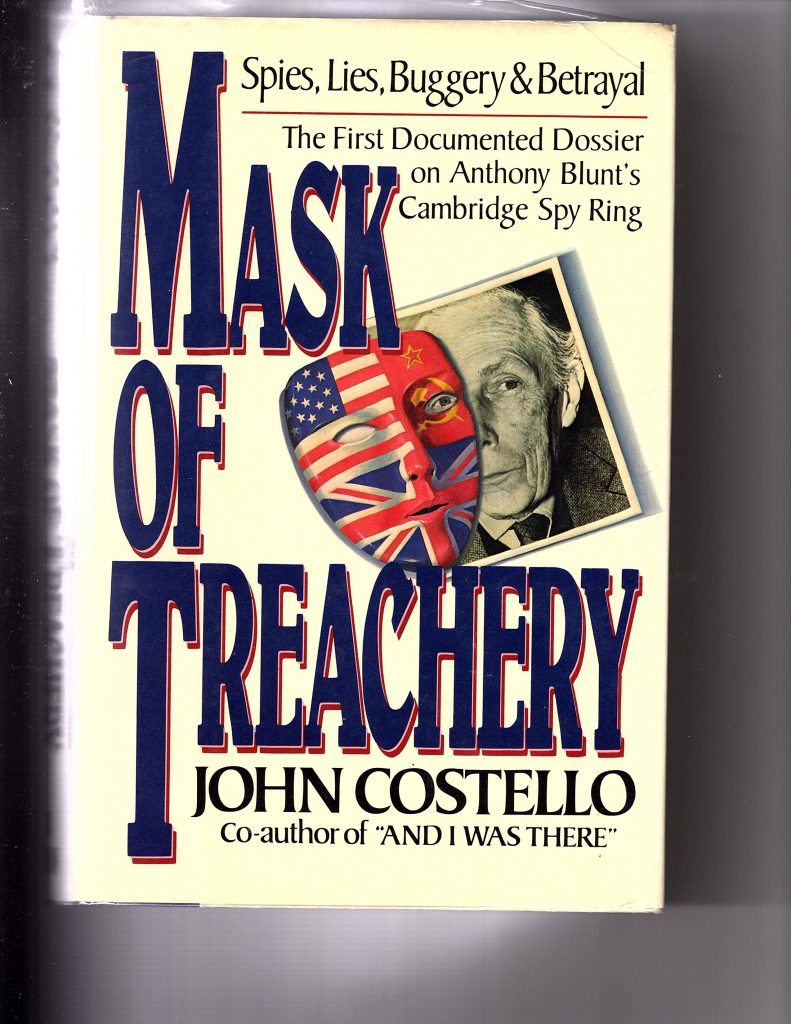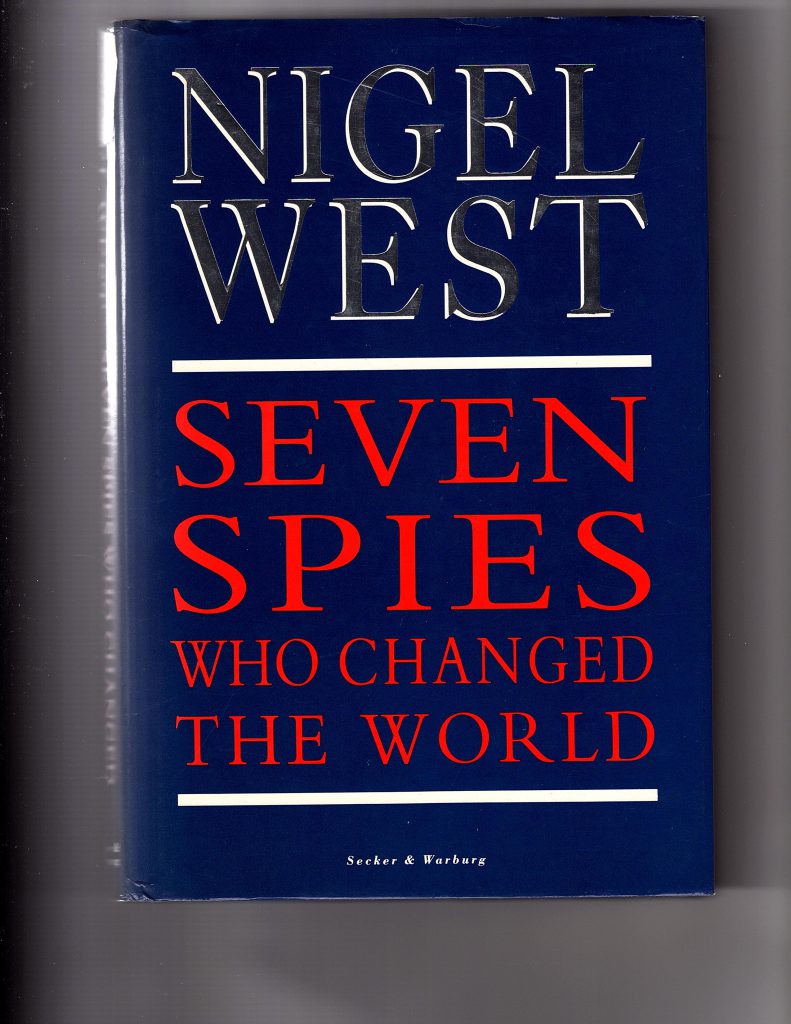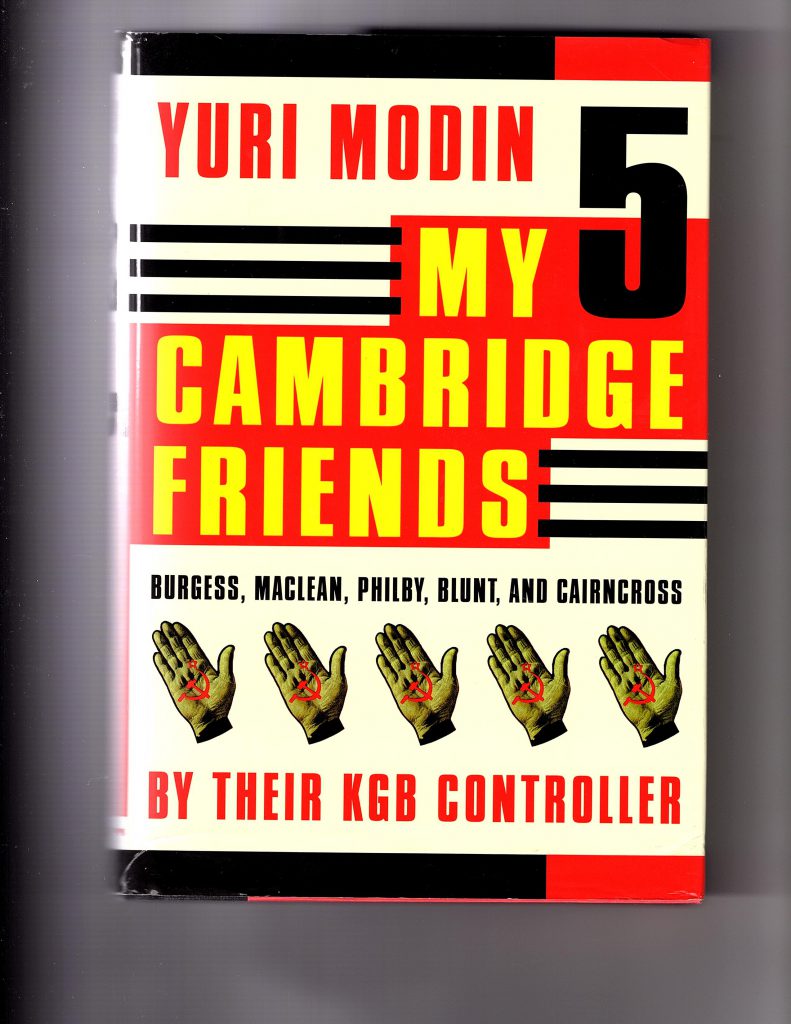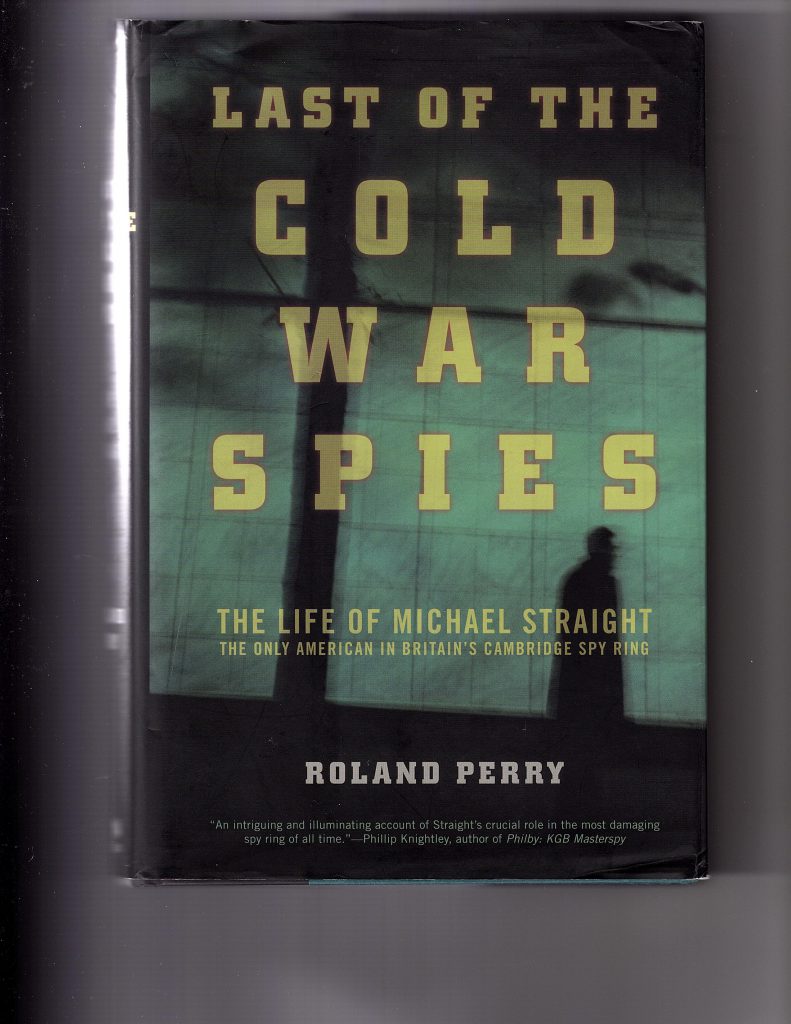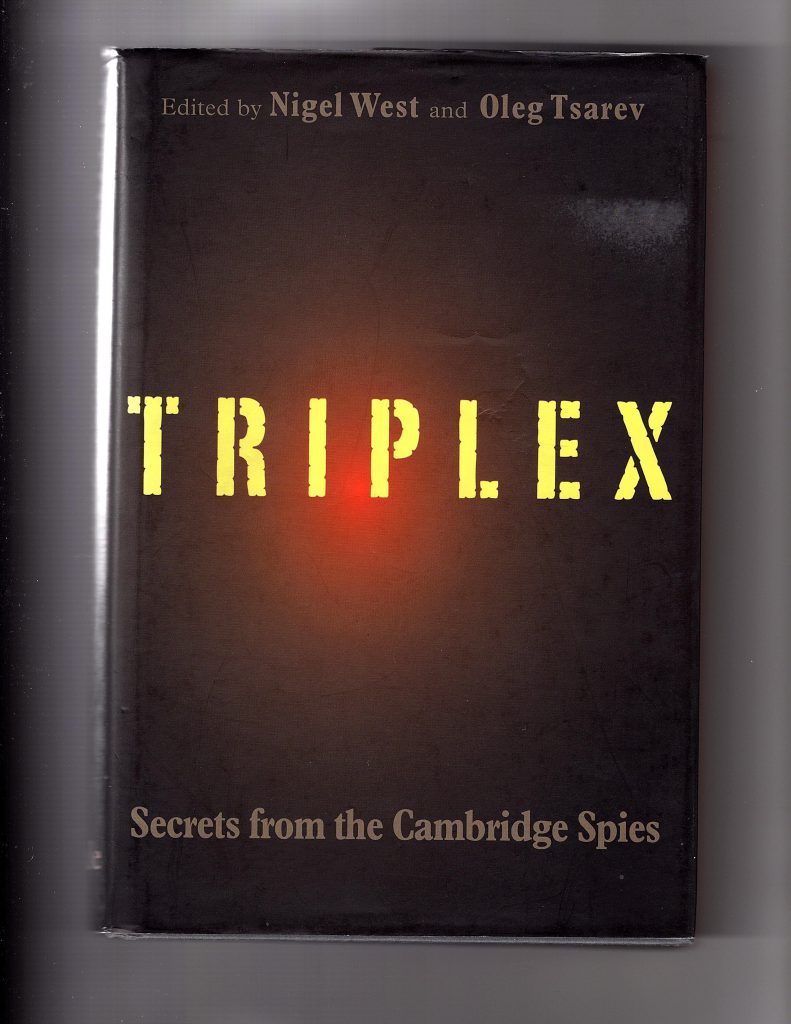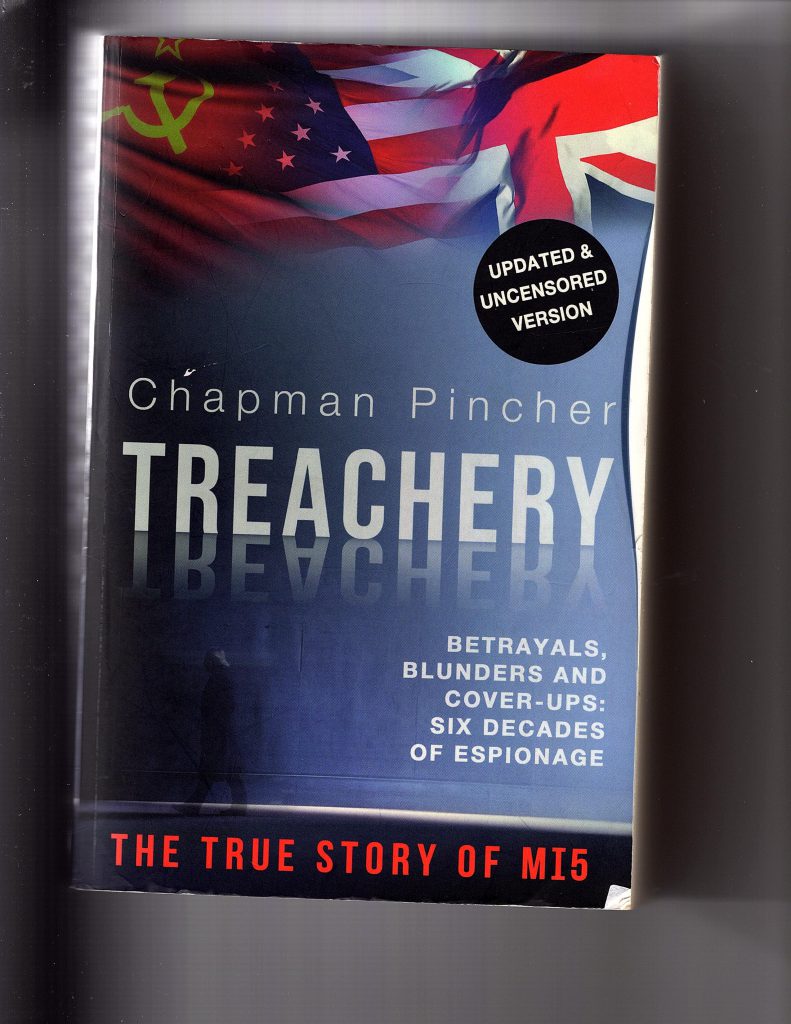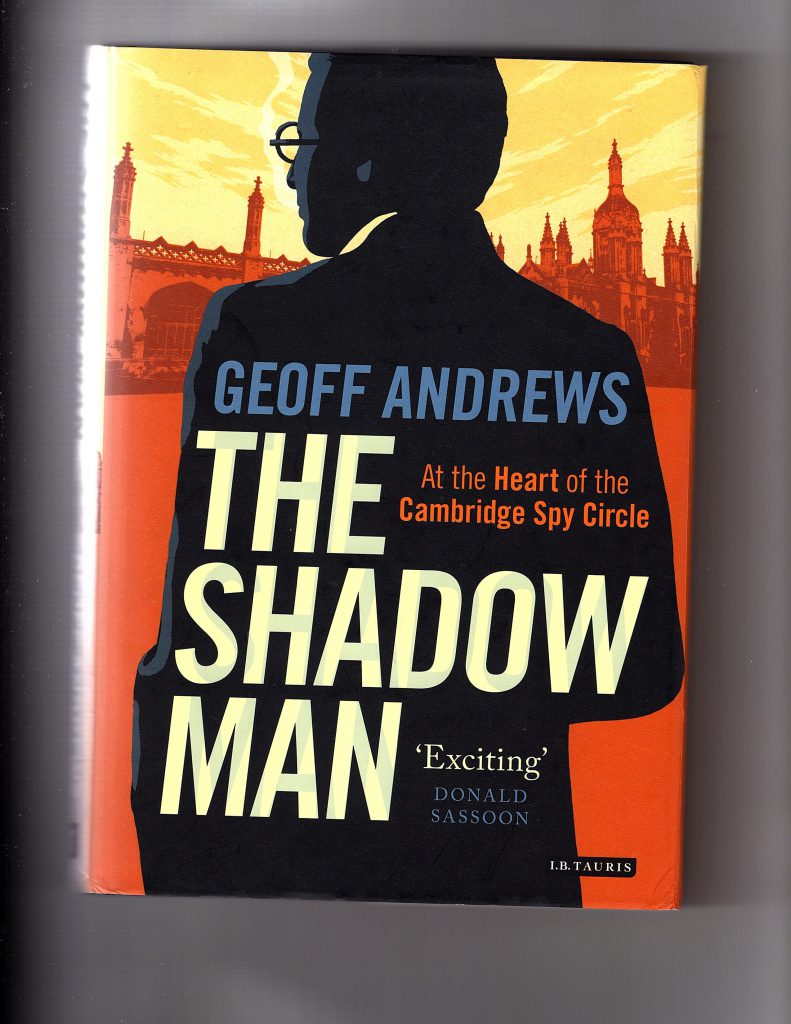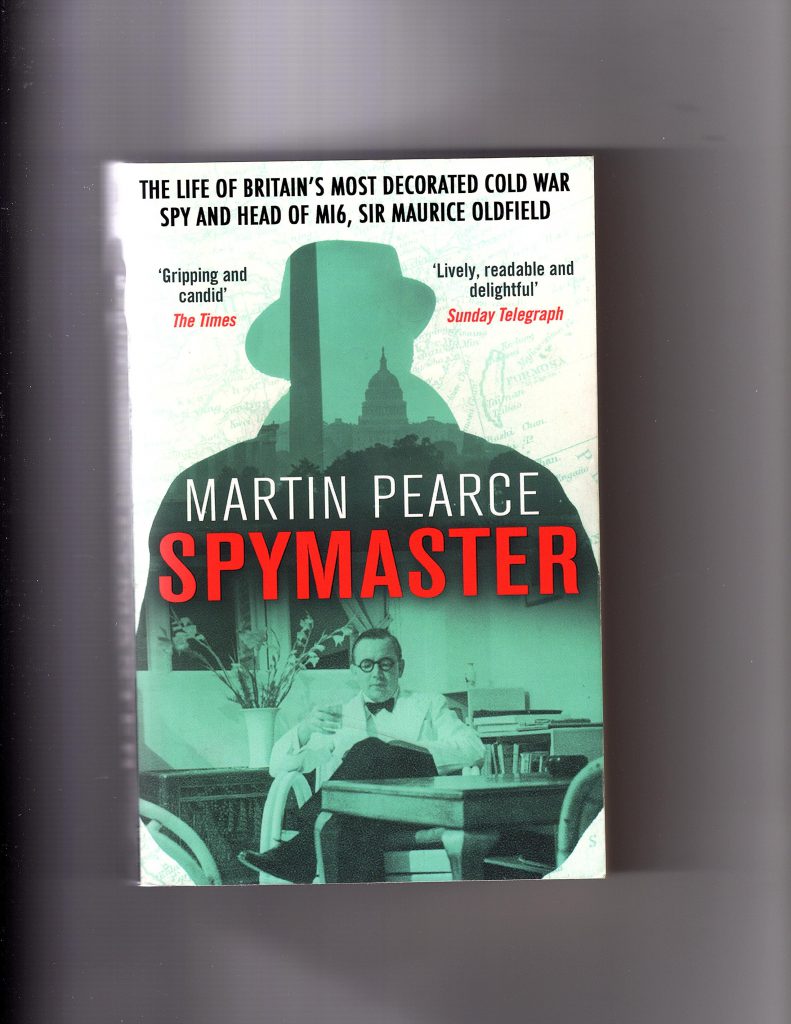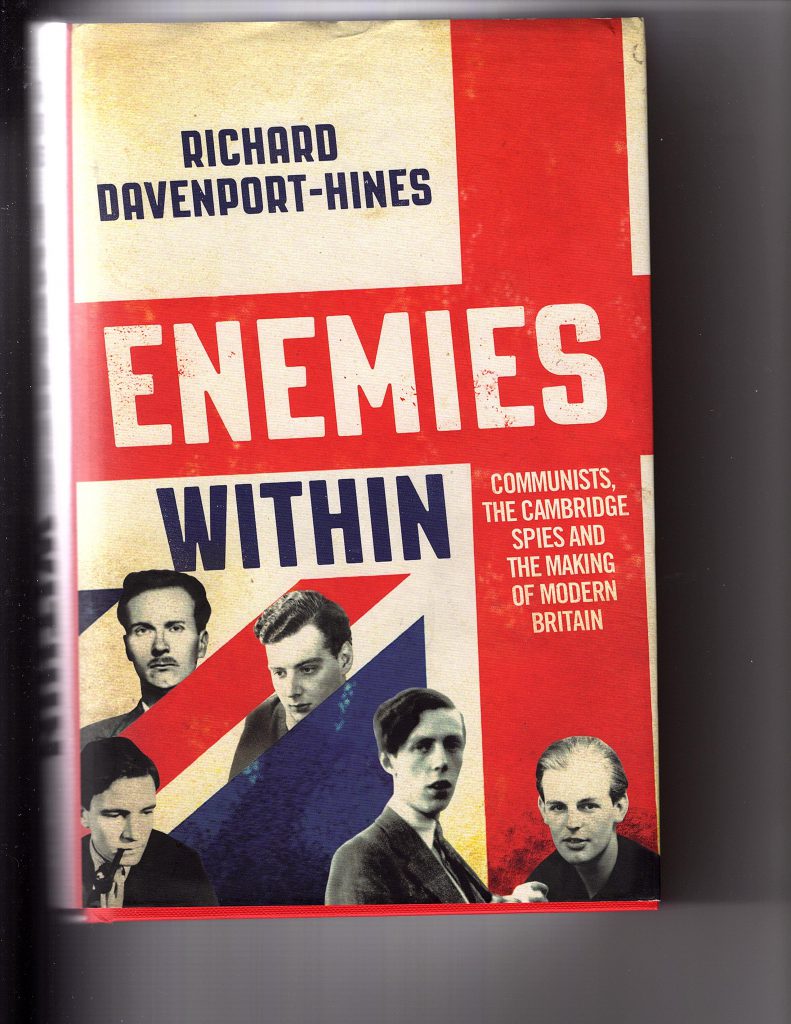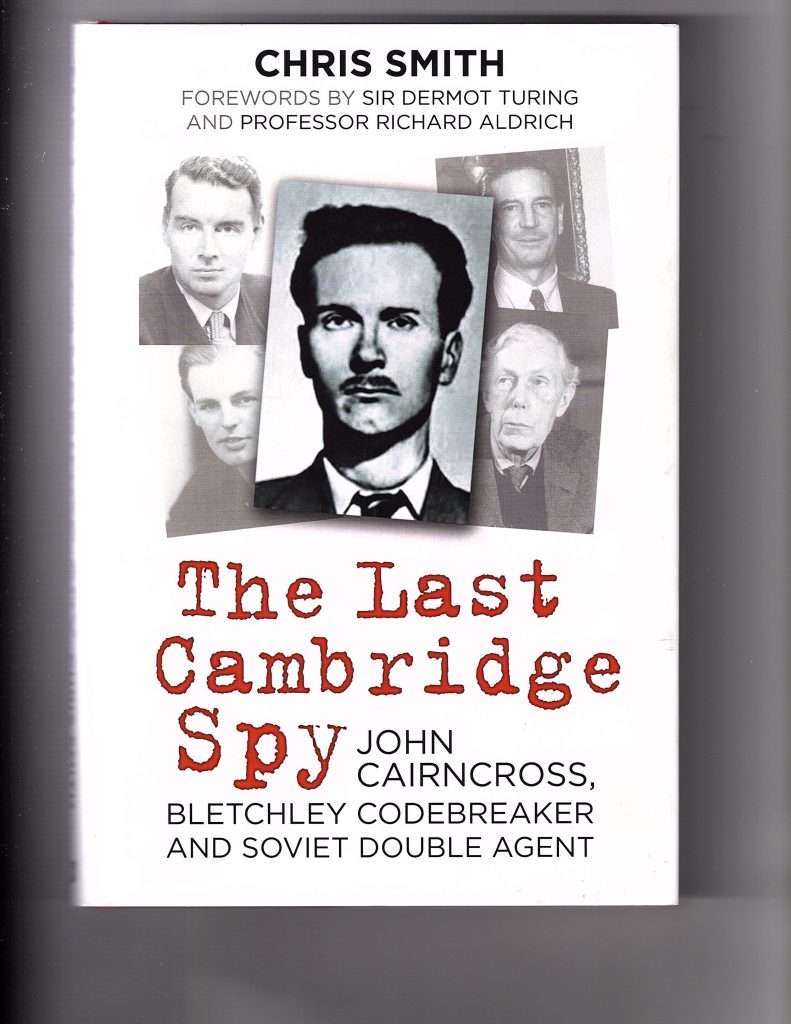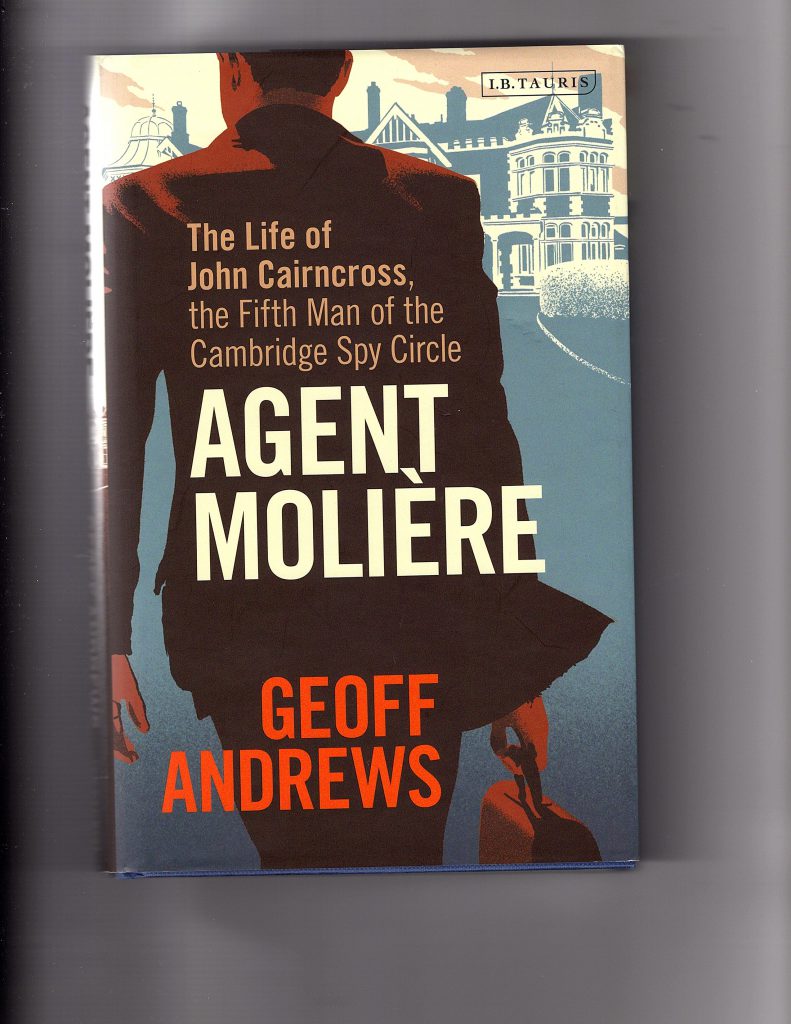
1. Introduction
2. The Historiography
3. The Authorised History
4. ‘SOE in France’
5. ‘All The King’s Men’
6. Mark Seaman’s ‘Glass Half Full’
7. The Foot-Suttill Collaboration
8. ‘PROSPER: Major Suttill’s French Resistance Network’
9. Mark Seaman’s Final Judgment
10. Conclusions
Introduction
(For explanatory background to this report, please refer to my previous posts on the betrayal of French SOE circuits: ‘Claude Dansey’s Mischief’, and ‘Special Bulletin: Let’s TWIST Again’.)
When I dipped my toe into the waters of the Henri Déricourt affair, I was not aware that I was going to be grappling with one of the most controversial topics of 20th-century British intelligence. Almost eighty years after the events of 1943, when the leader of an SOE F Section network was captured by the Germans, alongside his wireless operator, the analysts who have written about the incident fall into two sharply opposed camps. On the one side, supported by the tradition of authorised historians and tacitly encouraged by government institutions, are those who downplay the significance of Déricourt’s evident treachery in the betrayal of Francis Suttill (the eponymous Prosper) and Gilbert Norman, ascribing their downfall to poor security procedures and bad luck. They describe the other camp, who claim that malign and misguided deception policies deriving from SOE, MI6 and, vicariously, the Chiefs of Staff, were responsible for Déricourt’s ability to provide the Sicherheitsdienst (SD) in Paris with revealing information about the Prosper network, as ‘conspiracy theorists’, a term that carries implicit abuse for the first camp, but in fact accurately describes what the second camp is properly trying to investigate – a conspiracy.
What astonishes me is how vitriolic the dispute has become. I have received email messages, and have noticed comments on chat group sites, that are utterly intemperate and equally misinformed about the arguments made by those writers who question the official story that maintains that no betrayal of the circuit, nor any cover-up, occurred. Such commentators (for example) use partial errors in such analysis to discredit completely all aspects of the work they criticise. This phenomenon encouraged me to dig much deeper, in an effort to understand how the whole business could have grown so divisive. In this report, therefore, I plan to describe how the controversy evolved, and review the major events and publications that gave rise to the dispute over the betrayal of the Prosper network. I shall then offer a detailed analysis of the current ‘establishment’ case, as made by Francis Suttill’s son, and endorsed by the nearest person we have to a current ‘authorised’ historian of SOE, Mark Seaman. In further bulletins I shall relate what I have learned from a detailed study of the Déricourt archive, an exercise that I believe sheds dramatic new light on the affair, as well as explore the 1943 decisions and directives of the War Cabinet that led to activities that were later regretted.
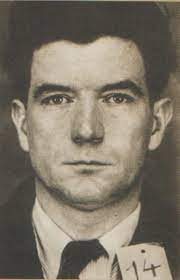
Both camps would probably agree on the basic facts. Déricourt, a French aviator who had had pre-war contacts with the Germans, managed, in August 1942, to gain a place on the MI9 escape-line from Vichy France through Gibraltar to Scotland. At some stage during his interrogations he was recruited by SOE, and trained as an Air Movements Officer to plot and execute the landing of F Section agents in occupied France. Between February and July 1943 he successfully carried out this role, although the head of the growing Prosper network, Francis Suttill, expressed fears that his network had been penetrated. Indeed, Déricourt had been in touch with the Gestapo, and had provided them with mail destined for England that they were able to copy. In June 1943, Suttill and Norman were betrayed and arrested, along with hundreds of resistance operators, and many arms caches discovered. Henri Frager, another network leader, voiced his doubts about Déricourt to his SOE bosses, and Déricourt was recalled in February 1944. The investigation was inconclusive, but Déricourt did not work for SOE again. After the war, he went on trial in France for assisting the enemy, but the assistant head of F Section, Nicolas Bodington, in an extraordinary statement to the military court, declared that Déricourt had been working under SOE direction, and the latter left the court a free man.
Yet several strands have to be unravelled. The Prosper network was definitely betrayed, but was its demise attributable to bad practices, such as careless meeting or talk, or undisciplined use of wireless? Was it infiltrated by agents working for the German Abwehr or Sicherheitsdienst? To what degree were Déricourt’s actions responsible? And was SOE in London merely negligent, in tolerating or encouraging poor spycraft, and not paying enough attention to wireless security techniques, or was it more seriously culpable in allowing the network to be sacrificed for broader deception goals?
The Historiography
[The following two sections are largely reliant on the following sources: the Introduction to Nigel West’s Secret War; the Preface, Acknowledgments and Appendices to E. H. Cookridge’s Inside S.O.E; David Stafford’s Introduction to M. R. D. Foot’s SOE 1940-1946; M. R. D. Foot’s Preface to his SOE in France; Bickham Sweet-Escott’s Foreword to his Baker Street Irregular; M. R. D. Foot’s Foreword to William Mackenzie’s Secret History of SOE 1940-1945; The Origins of SOE in France, by Christopher J. Murphy, published in the Historical Journal (2003); and A Glass Half Full – Some Thoughts on the Evolution of the Study of the Special Operations Executive by Mark Seaman, published in Intelligence and National Security (2005).The analysis is augmented by my own interpretation of events, and by my reading of most of the source books mentioned.]
Ever since SOE’s functioning was revealed after the war, a hint of betrayal was aired. The controversy started when memoirs and biographies of SOE agents began to be published in the 1950s. Bickham Sweet-Escott had tried to gain approval for his memoir Baker Street Irregular in 1954, but was sharply rebuked by the War Office, and had to wait a further eleven years before being allowed to publish it. E. H. Cookridge, whose Inside SOE appeared in 1966, in particular identified Jean Overton Fuller’s Double Webs, and Elizabeth Nicholas’s Death Be Not Proud, which were both published in 1958, as drawing attention to the fact that all was not as well as perhaps claimed in the administration of undercover work in France in World War II. Nigel West also highlighted those two works. Yet (as West also points out) Maurice Buckmaster, who led the British-controlled F section of SOE (as opposed to the Fighting French section RF that consisted of native Frenchpersons, and liaised closely with de Gaulle’s intelligence and sabotage apparatus, the Bureau Central de Renseignements et d’Action – BCRA) had published a memoir in 1952 that recorded some tragic deaths – especially of women agents – and referred obliquely to penetration by informers of their networks.
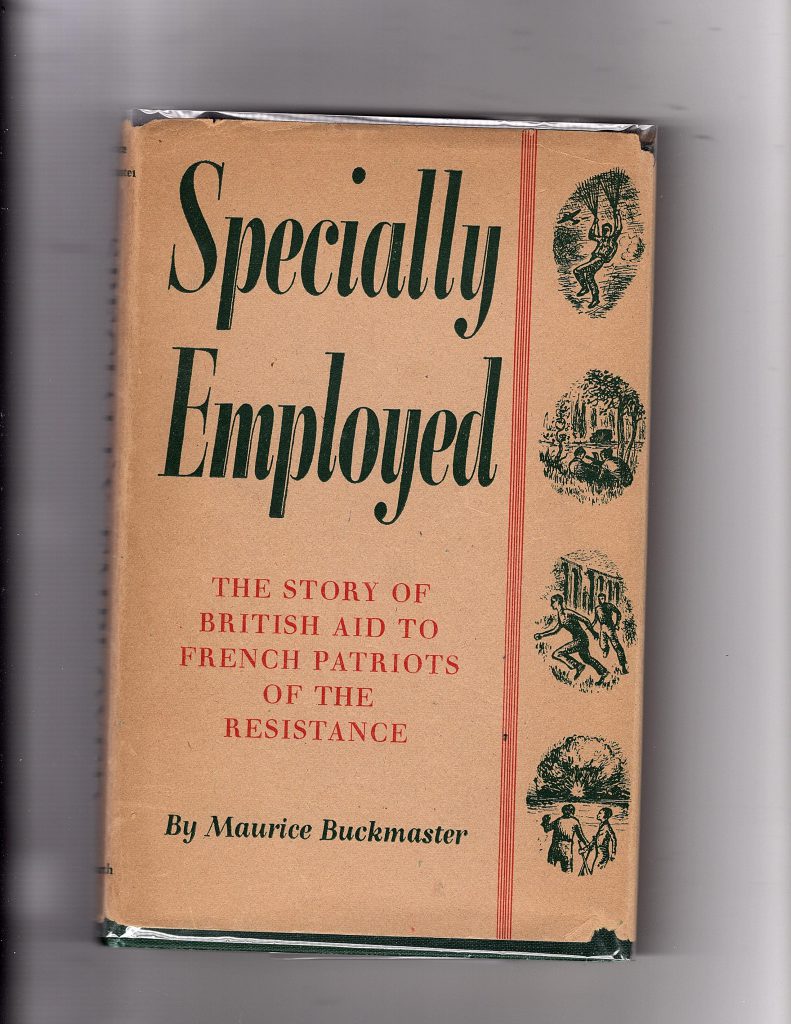
Buckmaster’s memoir, titled Specially Employed, was a very coy work. He had surely been encouraged by the War Office, or by the Foreign Office, to publish his book as an item of propaganda, to counter the growing message that the deliverance of countries overrun by the Nazis had largely been abetted by Communist partisans. Yet he did not identify the unit he worked for, the Special Operations Executive (even though Colin Gubbins had revealed its name in a lecture in 1948), describing it as ‘a secret organization in the War Office’ (p 15), but then later as part of the Ministry of Economic Warfare (p 66). Moreover, he was rather cavalier with the facts – even admitting so, in his Foreword – including some egregious and embarrassing errors, such as the claim that the unidentified Prosper and Denise (the codename of Andrée Borrel) were both shot in 1945. He did draw attention to the risk posed by informers, and that such revelations must have caused many agents to be arrested and later killed, but he completely avoided any notion of errors on the part of the ‘Western European Directorate’. While naming both Park (his ‘Cerberus’ at the flat near Oxford Street where agents were briefed), and his personal assistant ‘Vera’ (Atkins), he failed to include his deputy Nicolas Bodington in his narrative.
The author must have believed that his untruths and misrepresentations would not be found out. Yet he would have to adjust his story because of two primary phenomena – not so much the over-dramatised and unreliable memoirs and biographies that appeared, but a) the individual sleuthing of enterprising individuals who had friends who had been killed, and b) memoirs from abroad, notably by members of the German intelligence services, which of course the British authorities could not control or censor. And some of the statements that Buckmaster made in his book would turn out to be very incriminating, as I shall show later.
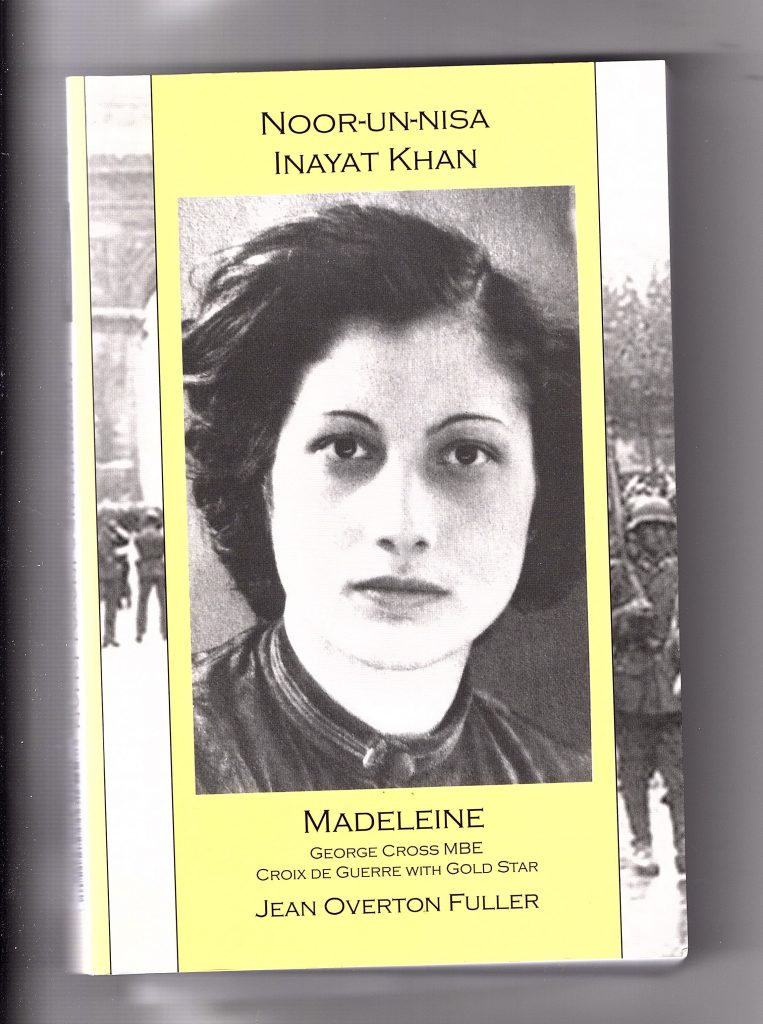
In the same year in which Buckmaster’s first book appeared (1952), Jean Overton Fuller had published Madeleine, about the SOE wireless operator Noor Inayat Khan, who had been a friend of hers. Noor had been flown into France, alongside Diana Rowden and Cecily Defort, in June 1943, where they were met by Déricourt, to support the Prosper network, but she had been captured in October, and was executed at Dachau in September 1944. In 1953, H. J. Giskes, the German officer who had managed the infamous Englandspiel deception game with captured British wireless apparatus in the Netherlands, published London Calling North Pole, which unveiled how SOE in London had been duped for over a year, and had consequently sent further agents to their doom. And in 1954, Hugo Bleicher, who had been an Abwehr officer in Paris, and through dissimulation had encouraged the Prosper network member Roger Bardet to transfer his allegiances to the Germans, with disastrous results for several SOE agents, published Colonel Henri’s Story.
Thus Fuller, one of the prime investigators into the deaths of agents that were insensitively not openly recognised by the British authorities, had a lot of material to work with. Fuller was an enigmatic character. After Madeleine, she wrote several books about France and the SOE: The Starr Affair (1954), Double Webs (1958), Double Agent? (1961 – described by the author as ‘the expanded and revised edition of Double Webs’), Horoscope for a Double Agent (1961), The German Penetration of SOE (1975), and Déricourt: The Chequered Spy (1989), as well as a compilation of Déricourt’s writings, Espionage as a Fine Art (2002). What is extraordinary is the fact that her later books have become very rare and expensive: only a single copy of Déricourt: The Chequered Spy can be seen as available on abebooks, at a price of over $2,000. It is as if the Foreign Office had bought up as many of the extant copies it could afford, because it found its revelations too damaging. (There have been precedents for such behaviour. Nonetheless, Patrick Marnham, who borrows the volume from the London Library, informs me there appears to be nothing especially damaging or subversive in it.) Another troublesome aspect of Fuller’s work is that she tended to move too close to the persons she wrote about. Double Webs has her reading Déricourt’s palms, devising his horoscope, and discussing theosophy with him. As her obituary in the Guardian put it: “Yet her judgment could suffer from a tendency to become emotionally attached to her subjects.”
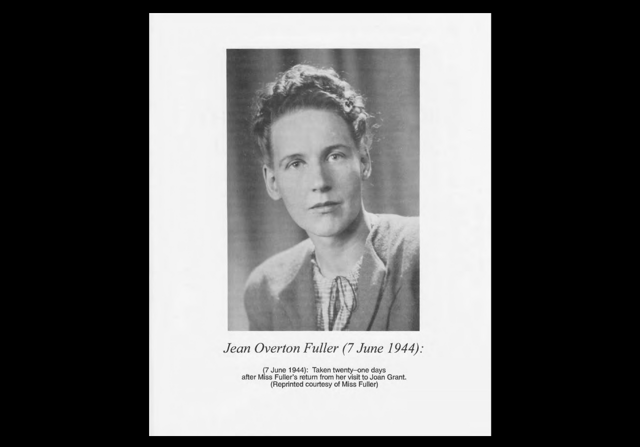
Her book on John Starr shows such tendencies. Nigel West describes Starr in the following terms: “ . . . an SOE turncoat who had given the Germans his parole in 1943 following his second ill-fated mission to France”, and West compliments Fuller’s Double Webs for revealing that captured British agents were greeted at the SD headquarters in the Avenue Foch by Starr, ‘a genial British officer’. West goes on to write that Starr ‘after the war narrowly escaped prosecution for treason and went to live in Paris’. Yet Fuller’s book on Starr (published in the USA as No. 13, Bob) characterised him as ‘a man of honor and a considerable largeness of heart’ who was let down by the Foreign Office when it had tried to stifle his revelations about German use of SOE radio sets. In a move to absolve Starr, she concluded her book with the following equivocal and clumsy assessment: “Naïveté which may leave one at the mercy of unscrupulous persons is perhaps a failing, especially on the part of those holding respectable positions; but failure to recognize decency, and equivocation when the greater safety would lie in frankness can, even from a practical point of view, be equally a blunder.”
Double Webs, on the other hand, shows Fuller’s pertinacity as a sleuth. It is remarkable in that it offers a comprehensive analysis of Déricourt’s recruitment and operation without ever naming him. She had been introduced to the betrayal of Suttill and Norman through her study of Noor Inayat Khan, and relentlessly tracked down members of SOE (both F and RF sections), members of the Abwehr and the SD, and relatives of the dead. Among the German contingent was a highly important Abwehr officer, Richard Christmann, who had impersonated a Dutch SOE agent, and infected the SOE networks around Paris. The problem, however, with carrying out such extensive interviews with such shady characters, who for various reasons had much to conceal, is that they are probably lying half the time, and it is very difficult to determine which part of their testimony is reliable. Fuller also dug out the proceedings of Déricourt’s trial in Croydon in April, 1946, after he had been arrested for smuggling, and unveiled the personal and voluntary plea that Nicolas Bodington had made on Déricourt’s behalf.

Fuller interviewed Déricourt at length, and was clearly seduced by his charm. (He was a very Philbyesque figure.) Thus, while pointing clearly to Déricourt’s involvement with the SD, she ended up very confused about his role, and the extent to which it was condoned by the British authorities. Nigel West credits her with ‘unearthing the appalling truth’ that Déricourt ‘had worked as a double-agent for the Sicherheitsdienst’. Yet she floundered around on the vexed issue of ‘double-agents’ (as indeed does West: it is a paradoxical matter to which I shall return in depth next month), and she was thus unable to come to a clear statement about her subject’s guilt. Indeed, she allowed Déricourt to review her manuscript, and to provide a paragraph at the end of her work that allowed him to ‘approve’ of nearly all she wrote. “I can sleep at peace because I know that I was not responsible for the arrest of ‘Prosper’, ’Archambault’, or any others”, he wrote.
In many ways, Fuller did a sterling job, having no access to any archival material, and having to deal with the fog of disinformation that descended when she tried to push behind the scenes. She laid out many important facts about the life of SOE’s agents in France, and the problems of administration, covered up by Buckmaster and others, that had contributed to the penetration of the networks. Her work has rightly been cited in many accounts – although rather sparsely by Foot in his authorised history – and she has been recognised, alongside Elizabeth Nicholas, for enabling the prodding of questions in Parliament that led to the project to authorise an ‘official’ history of SOE.
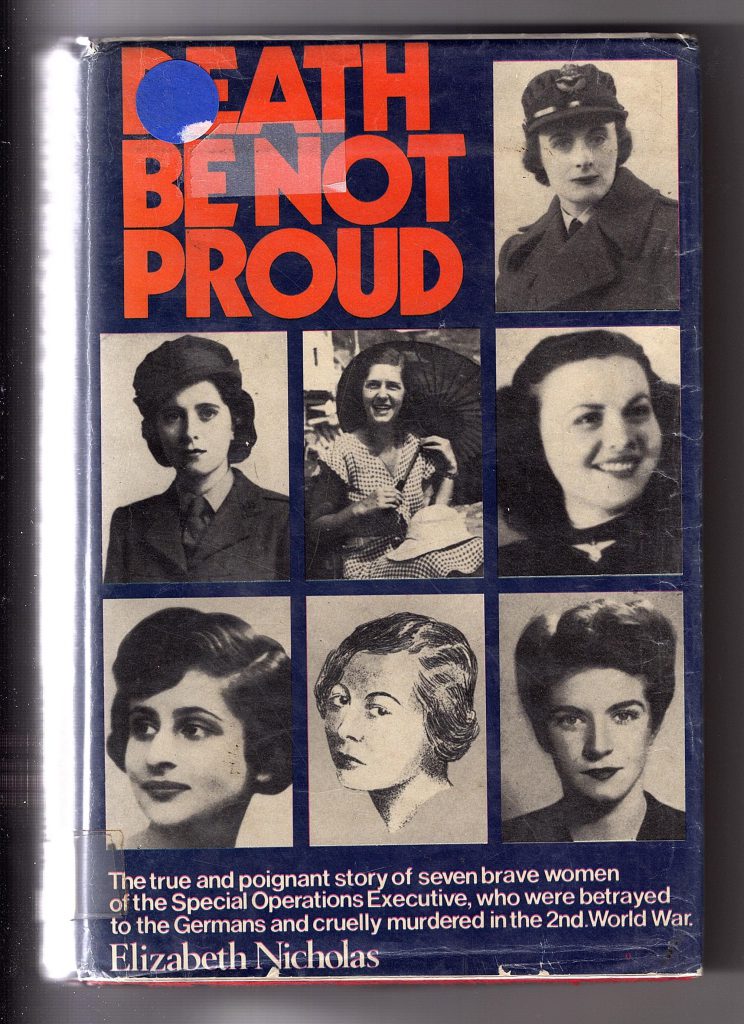
Elizabeth Nicholas was also spurred to action by a friendship with one of the deceased, namely Diana Rowden, and her book is a memorial to seven courageous women who lost their lives working for SOE. Death Be Not Proud is a very impassioned, but still calm, exploration into why seven women who worked for SOE were murdered in concentration camps. She did not take a ‘feminist’ line by arguing that the women were treated especially badly by the organisation that recruited them, but she was scathing about the insensitivity shown by the British authorities after their deaths, by not being straight with their relatives, or acknowledging what actually happened. Like Fuller, she painstakingly uncovered an armoury of facts about their demise, travelled far and wide, met and interviewed scores of people, and wrote several hundred letters. One of those whom she interviewed was Hugo Bleicher, and she concluded that all the women ‘were linked with the webs spun by Hugo Bleicher, with Prosper, and Henri Frager and Roger Bardet, and with the radio sets that had, week after week, sent false messages to London’.
Thus Nicholas added another strong arrow to the bow that Dame Irene Ward, the Conservative Member of Parliament for Tynemouth, took with her to Question Time on February 22, 1956 (i.e. before Nicholas’s book came out) in the House of Commons, pleading for the relevant files to be made open. Those files had been formally closed after Fuller published her Starr Affair in 1954. The Joint Under-Secretary of State for Foreign Affairs (Lord John Hope) nevertheless riposted that ‘the grant of access on the occasion in November 1947 . . . was subsequently considered to have been ill advised in respect of precedent, and for reasons of security no further access has been or can be allowed’. Lt.-Col. Cordeaux (whom Nigel West identified, in the context of December 1958, as an MI6 officer who actually investigated the Nordpol disaster in the Netherlands) supported the decision, drawing attention to the harm caused by ‘amateur authors rushing into print and cashing in on two years’ wartime experience in some of our secret services’. For a couple of years the cover-up was allowed to remain in place.
Yet one of the establishment’s own echoed his earlier deed as an ‘amateur author’ by bringing out a picaresque account of SOE’s activities in France, Maurice Buckmaster himself. In the same year that Double Webs and Death Be Not Proud appeared, Buckmaster was allowed to publish They Fought Alone, a highly misguided endeavour to bring some glamour to the exploits of some of SOE’s more adventurous agents. By this time, Buckmaster was confident enough to be able to identify his wartime employer as the Special Operations Executive, and name its address as 64 Baker Street. He declared that he had led the French section, and explained how he was somewhat hampered because he could recruit only British subjects, the Free French section having a monopoly over French citizens. He named the man who recruited him in 1941 as Sir Charles Hambro, and indicated that the SOE reported to the Ministry of Economic Warfare. It was thus a step in the right direction towards greater openness.
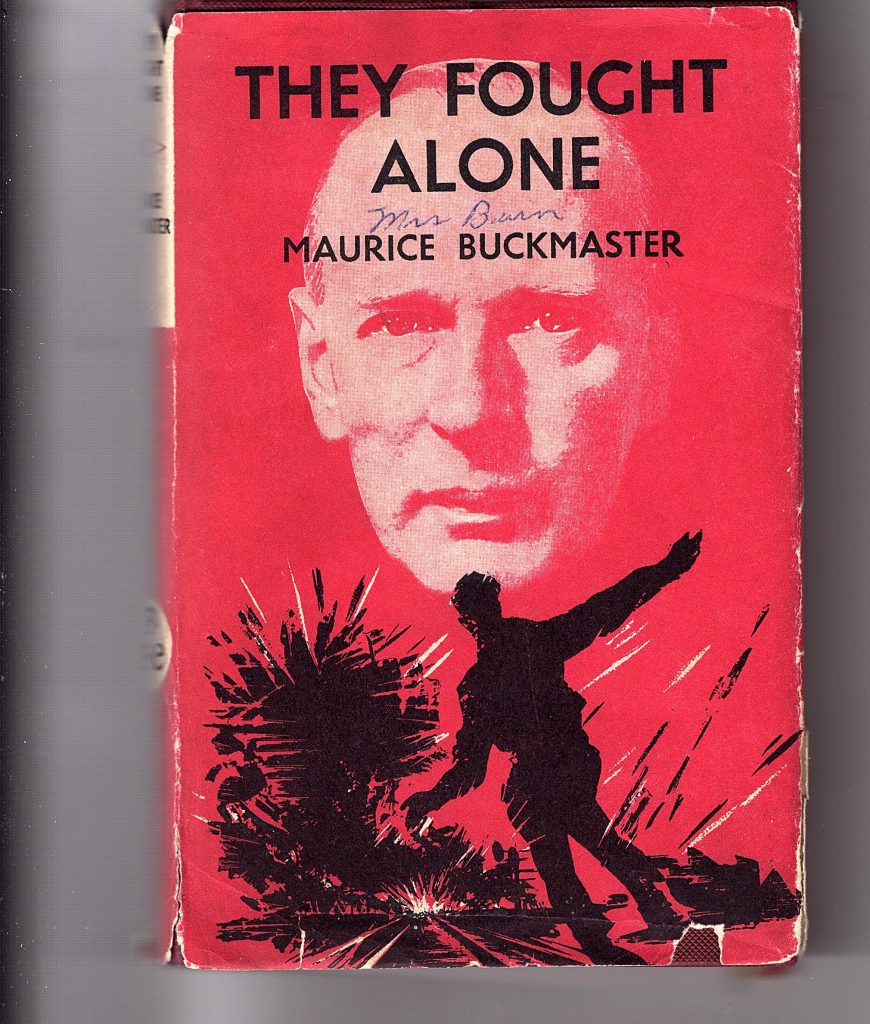
Yet his book is a mendacious work, sowing the seeds of the author’s subsequent bluster, drawing attention to the highly valorous and dangerous missions of some of those he recruited for work in France, but staying silent over any broad wireless deception games, or any serious strategic errors made by Baker Street. Yes, mistakes were made, some agents underwent horrible deaths, but it was almost entirely due (in Buckmaster’s narrative) to informers and to underhand and vile practices by the Abwehr. Neither Bodington nor Déricourt ever gets a mention in this highly readable but essentially fallacious tale of derring-do. There are crass errors in it (such as Gilbert Norman’s being landed in France some time after he had been arrested), but also some very subtle but careless historical flaws, over which Buckmaster has apparently never been challenged. The most egregious of these relates to the military instructions that SOE and Buckmaster received in the summer of 1943, and these are so critical that I shall return to them later in this posting.
The Authorised History
What this commotion eventually led to was the appearance of M. R. D. Foot’s authorised history of SOE in France. I do not intend to re-present the full trajectory of this exercise, but do want to highlight some important episodes in its delivery. Pressure was applied by Dame Irene Ward for a public account; there were discussions in the House of Commons; MI6 vicariously objected; retrospective justifications of the project, as a counter to Soviet propaganda, were voiced; Harold Macmillan, the Prime Minister, eventually agreed; Professor Mackenzie (who had written an unpublished in-house history of SOE) gave advice on treatment and possible authors; the decision to move forward, despite continuing objections from the Cabinet Office, was made on May 18, 1960; Foot accepted the invitation in early November, and set to work immediately.
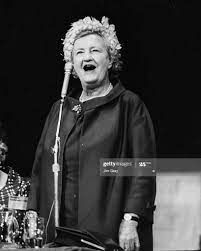
My first point is the indication that the exercise might have been very embarrassing, as revealed in the long parliamentary motion tabled by Dame Irene Ward in the House of Commons on November 13, 1958, which is reproduced in an Endnote in West’s Secret War, as well as in Appendix A of E. H. Cookridge’s Inside SOE. While Ward drew attention to Double Webs and Death Be Not Proud, and cautiously undermined the accounts of SOE given by Buckmaster, her motion including the following clauses:
. . . that had the Official Secrets Act been adequately enforced by authority and proper care exercised to protect in Great Britain and France the reputations of those who became the unwilling victims of Nazi German success, much painful recrimination would have been avoided, but that under the circumstances the question of whether the Air Movements Officer of the Special Operations Executive, the central figure in the book Double Webs, was a German agent working in a British organization, must be cleared up; that although the disclosure of German penetration of the Dutch Sector of Special Operations Executive was the subject of an international inquiry, the fact of this penetration extended from Holland to a vitally important area in France, causing the arrest of many men and women, has been deliberately concealed, has led to disclosures damaging to our security and to our relationships with those friends in France in the years of danger going unchallenged and without official factual comment; this House therefore urges Her Majesty’s Government to publish a book giving an authoritative account of the successes and failures of the Special Operations Executive.
This is a very convoluted statement that contains its own paradoxes: for example, how, if the fact of penetration had been concealed, did it lead to exposures damaging to security? Had Ward bitten off slightly less, and presented her motion in somewhat simpler language, she might perhaps have gained more attention. It was nevertheless still a menacing submission. As it unsurprisingly turned out, the Motion was never called out by the Speaker, and she had to work behind the scenes. Yet she dramatically gave unmissable clues concerning the unnamed Déricourt, the ‘Air Movements Officer’ (described in great depth by Fuller, but of course also never identified) as a ‘German agent’, and threw the gauntlet down to Buckmaster, in whose book published that same year no mention of that officer had been made. Those who knew the full story must have had qualms.
Secondly, a revealing observation was made by the Foreign Secretary, John Selwyn Lloyd, in a letter drafted for Dame Irene some time in May 1960. (It may not have been sent: Christopher J. Murphy, who cites it in his article, does not say.) Lloyd expressed great caution:
But I have to think of the national interest; and I have to think in terms of the present and future than of the past . . . Some of our activities, moreover, although justifiable in war, could cause us a lot of embarrassment if publicly admitted now. Then I have to consider the effect of our relations with our wartime allies, and whether the inevitable revival of old controversies and re-opening of old wounds would not do more harm than good.
Selwyn Lloyd did not have to ruminate on these questions for long: he was transferred to the Chancellorship of the Exchequer two months later, to be replaced by the very laid-back Alec Douglas-Home, who may have been confused by the whole business. But to what dark deeds was Selwyn Lloyd referring, justifiable in war, but potentially embarrassing? Surely nothing as monstrous as the massacres at Lidice, Oradour, Monte Sole, or Telavåg, or the concentration camps, or the cold killing of British commandos, as ordered by Hitler? This was SOE, after all, not Bomber Command. The assassination of Heydrich was surely not an issue: the reprisals were horrific, but no revelations would have caused embarrassment with British wartime allies in 1960. Yet Selwyn Lloyd gave the impression that malefactions had been perpetrated, and done so as part of a conscious but possibly misguided strategy, albeit with good intentions. The reference to ‘allies’ must surely mean the French, since the rumours about British maltreatment of French resistance fighters had been a recurring element in stories across the Channel. Was Selwyn Lloyd referring to those scars hinted at in Ward’s paper? In any case, his words do serve to counter the claim that Foot made in his Preface: “Nor is it true that irresponsible staff officers made such fearful errors that there is a whole discreditable story to be hushed up.”
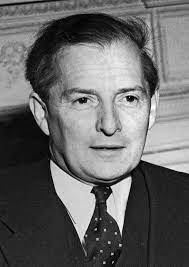
The third aspect I wish to bring up is Foot’s terms of reference, and the guidance given to him. In his Preface and Acknowledgements to Inside SOE (apparently written in 1966, after Foot’s book appeared in May of that year, while Cookridge’s book was about to be published), the author wrote that “Mr Foot stated that at one stage during his research he had been ‘forbidden’ to make personal contacts with former SOE officers, and had to rely on official archives only.” Cookridge added: “He wrote: ‘SOE’s own archives are of course in many respects sadly incomplete.’” Now those phrases cannot be found in my 2004 edition of SOE in France, which – presumably faithfully – reproduces Foot’s original Preface. That Preface, however, is dated September 1967, and we know, from Foot’s own testimony, that, after circulating the galley-proofs to interested parties, he had to make a number of changes, as he had offended some veterans of SOE.
Mark Seaman expands on these tribulations in his essay A Glass Half Full, where he records that Buckmaster himself was ‘utterly horrified’ and ‘amazed by the number of mistakes’ that appeared in the galley-proof, and offered thirty-five pages of corrections. Yet, even though Foot was able to rectify most of those errors, the publication still provoked controversy, even lawsuits, with substantial damages being settled out of court, the events leading to a second impression. “Foot’s uncompromising and profoundly iconoclastic approached veered on occasion into some ill-judged observations”, wrote Seaman. And Seaman was not impressed with how the 2004 edition worked out, given the passage of time and the fresh information that had emerged: “A classic history has been little improved by slight tinkering with the text, and expanded bibliography and some additional footnotes”, he wrote. But the great iconoclast had not been willing to tilt at the windmills of Foreign Office sensitivity.
In 2004, Foot made it clear, however, that, since the original edition, he had been able to speak with former SOE officers, and others. He wrote as follows:
Since this book first appeared in April 1966 I have had further help, for which I am much indebted, from various former members of SOE and of the forces of French resistance, particularly from Colonel Dewavrin. Their aid has enabled me, in the little time I have had available for work on the book, to improve it in several minor respects and to revise the account of the arrangements made in London for calling resistance into activity at the time of the invasion of Normandy.
This suggests to me two important conclusions. It was not until after Cookridge’s book appeared, compiled without any access to SOE Archives, since the Under-Secretary of State at the Foreign Office, John Profumo, had denied Cookridge such access ‘for security reasons’, that the authorities had second thoughts, seeing what a rich story Cookridge was able to tell by inspecting foreign archives in which many of SOE’s records had been stored, and interviewing scores of people. (Intriguingly, Patrick Marnham informs me that Foot suspected that Cookridge was being fed information by MI5 that was denied to him.) On the other hand, Foot explicitly had to rely on non-archival sources (or have what constrained interpretation he had been able to make from the official records enhanced by figures who supposedly knew more) for his account of the vital period in the war when the D-Day preparations were being made. And that is highly dubious and ahistorical in its own right.
Patrick Marnham has been able to provide some valuable insights into Foot’s process (see War in the Shadows, pages 167-172). He makes the points that Foot was rarely allowed to quote from the archive itself, and was reportedly not allowed to mention ‘the existence of his most important unpublished source, which was The Secret History of SOE by William Mackenzie’, let alone meet the author. In a footnote, Marnham states that Mackenzie’s work was not published until 2000, after Mackenzie’s death: the Sources in Foot’s 2004 edition lists Mackenzie’s History – which he edited – as ‘completed 1948; graded secret until 1988; a gold-mine’. (Foot claimed, in 2000, in his Introduction to Mackenzie’s work, that he had been forbidden from consulting William Mackenzie personally, while admitting that he had had access to the Secret History text itself. In his blurb promoting the Secret History, however, he also had the effrontery to pretend that the book had ‘been kept secret for over fifty years’, and that ‘many books now need to be re-written’.) And later in his book (pp 237-238) Marnham again introduces some highly interesting observations that shed light on how Foot was required to change his story in the light of public information.
Marnham’s major claim is that Foot was brought in to put to rest ‘the allegation that in the interests of strategic deception the British authorities had “sold” a French Resistance network run by SOE to the Gestapo’, and he cites Mackenzie’s own testimony that SOE possessed ‘unique facilities for deception’, but that, owing to the risk of deceiving the Resistance forces as well as the Germans, ‘SOE took no more than a subsidiary part [in] Operation Starkey’ [that feature of the COCKADE deception plan that involved a landing in Northern France]. To prove how Foot had ignored this hint in Mackenzie’s compilation, Marnham wrote that Foot, in his 1966 Introduction to SOE in France, referred to the ‘Starkey-Prosper’ connection as ‘the conspiracy’ theory, and, in the main text followed up with: ‘It is undoubtedly the case that no use was made of SOE’s work in France for any purposes of deception then [i.e. June 1943] or later: no one trusted the agents enough for such delicate tasks.” (p 308) In other words, Foot completely discounted any Starkey involvement. According to Marnham, Foot had a letter published in the Observer on May 11, 1986 which echoed his claim about the non-use of SOE for deception purposes. Fuller wrote that this letter was provoked by the BBC TIMEWATCH programme (see below): Robert Marshall recalls that it was written in response to an article on the front page of the newspaper, supplied by Anthony Howard under Marshall’s guidance.
Yet that statement about the Starkey-Prosper connection and the conspiracy theory does not appear in the revised Introduction published in 2004. On the other hand, as Marnham has explained, the latter sentence about SOE’s use of deception (on p 274 in the 2004 edition) has a brief phrase, namely ‘STARKEY apart’ inserted after ‘the case that’, suggesting that information that came to light afterwards had had to be taken into account. (Marnham presents this information, but cites the wording as ‘except in the case of Starkey’: he was using the French translation.) Foot does not explain this anomaly, however: there is no entry for STARKEY in his Index. Maybe Foot believed he could evade any responsibility for performing justice to this controversial matter, but, with the Mackenzie volume now no longer secret, had to make a token gesture in the direction of the STARKEY deception element.
Foot’s observation in his Foreword to Mackenzie’s book runs: “Colonel Bevan, who came to head the deception service [London Controlling Section] did not think SOE secure enough to take part in his exceedingly secret work, and hardly ever used it to achieve his devious ends; Operation ‘Starkey’, ill-fated as it was, in the summer of 1943 provided the only exception, apart from a single sharp stroke in Belgium in the summer crisis of 1944.” Yet there is no mention of Colonel Bevan or COCKADE in Mackenzie’s book – merely a brief mention of STARKEY, in terms of an innocuously-sounding project that SOE ‘should somewhat increase its encouragement to Resistance’ and broadcast bogus coded messages just before the invasion of September 1943 that was never going to happen (p 615, as noted by Marnham). By referring to an unexplained ‘ill-fated’ operation, however, something quite out of proportion to what Mackenzie described, Foot merely drew attention to a probable cover-up. (Describing an otherwise unexplained event as ‘ill-fated’ is not a recommended practice for a professional historian.) Marnham also writes that ‘quite a lot more was known about Operation Starkey at this time’. He is referring to Michael Howard’s Volume 5 of British Intelligence in the Second World War, and Hesketh’s Fortitude, but both works cover STARKEY very superficially, and no connection between STARKEY, Bevan and SOE can be seen in either.
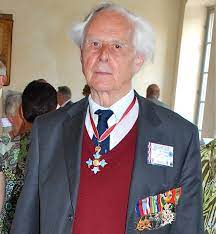
Foot’s History thus has to be approached as a volume with perspectives that evolved over time – rather like Goethe’s Faust. It is beyond my capabilities (since I have direct access solely to the 2004 version) to perform a detailed exegesis of the book’s evolution, but I can offer glimpses into the stresses that were forcing Foot to present the travails of SOE French section in a less damaging light. For example, in between the first edition and the so-called ‘revised’ edition of 2004, Robert Marshall published in 1988 All the King’s Men, a searing exposé of the damage caused by Déricourt, to whom the author ascribes the collapse of the Prosper network, stage-managed by Claude Dansey of MI6 (which I shall analyse later on in this piece). It was based on some thorough research that had fuelled a BBC TIMEWATCH television program. No matter how dubiously Foot considered Marshall’s sources, or how strongly he disagreed with his conclusions, Foot should have at least taken into account the details of Déricourt’s career that Marshall revealed.
Yet Foot could find no room in his Sources even to list All The King’s Men: in his Introduction to the books he does list, he wrote: “No useful purpose is served by putting into a book list books which confuse the issue, instead of widening knowledge, I have therefore left out several titles, some of them only too well known: their evidential value is nil. They testify to zeal, but do not spread wisdom.” One has to conclude that Marshall’s book fell into that category. It is a sad reflection on Foot’s historical judgment that he dismissed so pompously and so casually a vital contribution to the debate, and refused to engage with the very serious questions and hypotheses raised by Marshall and his team.
Such unprofessional behaviour is even more shocking when one is reminded of Foot’s involvement with the BBC. Robert Marshall has recently informed me that, when the BBC started working on its series on SOE in 1980, Foot was engaged as an historical adviser to the series. Marshall was told by a colleague that Foot had declared that there were two areas that the research team could not touch: SOE in the Far East, and Déricourt. Of course that statement had the opposite effect, setting off the researchers hot-foot to investigate the Déricourt story. However, when Marshall came to work on the TV program All The King’s Men in 1983, and interviewed Foot, the latter let slip some statements about Déricourt’s recruitment by Bodington (and, vicariously, MI6), and the claim that Suttill may have met Churchill during his return to the UK in May 1943, that he later came to regret. When Marshall and Foot lunched together, at the time Marshall started working on his book, in 1987, Foot recounted to Marshall all the restrictions that had been placed on him, and, in Marshall’s words ‘he had changed his views about Déricourt and insisted there had been no link with MI6’. Foot had clearly been nobbled.
‘SOE in France’
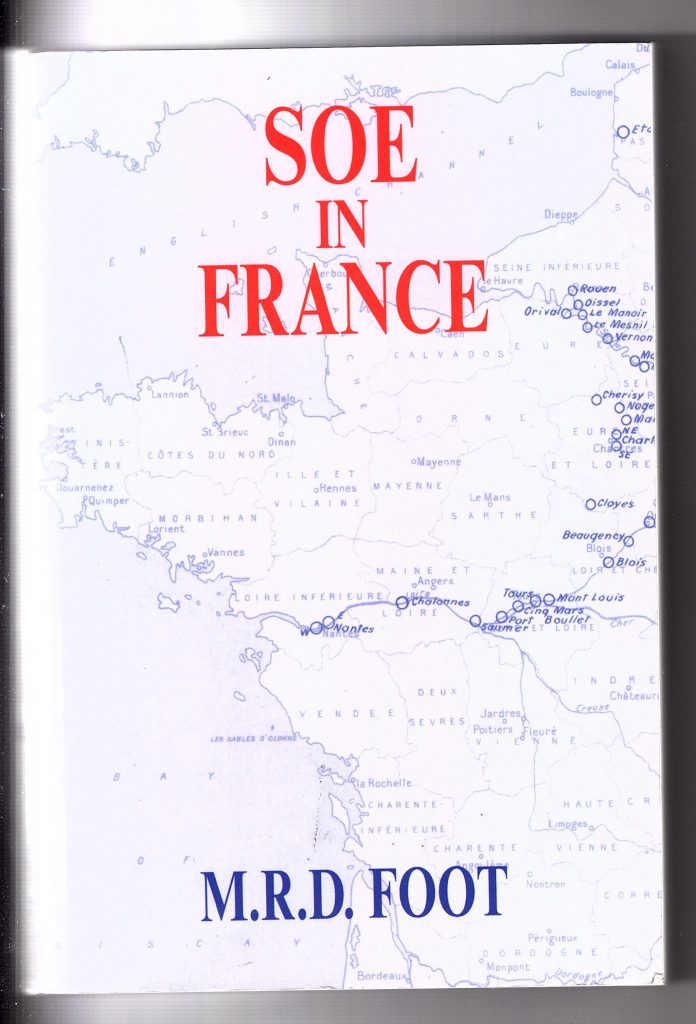
I base my analysis of SOE in France on the 2004 text. Chapter Ten is titled ‘A Run of Errors: 1943-1944’. Foot starts off with a bold judgment: “The connected series [of slips] arose from a single injudicious posting: the head of the FARRIER circuit, whose only task was to organize clandestine air landings for F in northern France, was after the war described by SD officers under interrogation as perhaps the best agent they had had.” Foot goes on to opine that Déricourt’s ‘only unswerving loyalty was to himself’. [FARRIER was designed as being subsidiary to PROSPER, but grew to extend beyond it.]
Foot then offers a lengthy and fairly conventional account of Déricourt’s progress, sanitized and distorted in some places by Déricourt’s own misleading version of events, with a full story about the many successful landings he arranged in occupied France. Yet Foot dances somewhat around the issue of Déricourt’s recruitment by the SD, and whether the pressure applied to him was inevitable, and how Frager (an F section agent) had learned of Déricourt’s treachery from the Abwehr officer, Henri Bleicher. Nor does he analyze why Déricourt, or those of his bosses at Baker Street who knew about the collaboration (Bodington, certainly, and probably Boyle, too), would have interpreted the obvious signals from the SD about not interfering with the airdrops as an indication of long-term goodwill, or why the release of agents’ correspondence to them was a necessary quid pro quo. He explains that Bodington’s presence at Déricourt’s military trial in Paris in June 1948 was in an unofficial role, as a civilian, yet it enabled Déricourt to leave the stage a free man.
And then Foot feels the obligation to debunk the suggestion that the network was betrayed by the British. He uses the Hinsleyesque evasive reference to rumour without explaining it properly: “It is said to be widely believed in France that Suttill’s circuit was deliberately betrayed by the British to the Germans; even ‘directly by wireless to the Avenue Foch’”. Yet such a statement is both arrogant and sophistical. He does not inform readers of the source of the rumours, apart from a ridiculous reference to wireless to the Avenue Foch (where the Gestapo headquarters resided). If one looks up the source of this particular item, it reads as ‘private information, 3 August 1961’. So why would Foot waste time on such an unreliable leak as that instead of examining the more serious critiques? This gambit is a familiar and much-loved technique of the establishment camp: Marshall’s All The King’s Men has been trashed by them since it includes an assertion about a meeting between Suttill and Churchill (revealed by Buckmaster, as it happens) that could not have taken place since the Premier was reportedly out of the country at the time. They then use this error to try to discredit the whole work.
Yet (as Patrick Marnham has reminded me), Foot himself contributed to this deceit. As Marnham writes (War in the Shadows, p 245): “Furthermore, the legend of Suttill’s meeting with Churchill did not spring from ‘something that first appeared in a novel published in 1985’ [as Suttill & Foot claimed in their joint article: see below. Coldspur]. It emerged from an error that first appeared in an official history. This rumour had sprung up because Professor Foot in SOE in France had mistakenly given Suttill’s return date as ‘about 12 June’ (after Churchill’s return to London) when it was in fact 20 May.” Foot was either being very sloppy, or very devious. Moreover, Robert Marshall has recently explained to me that, at the time of his TIMEWATCH research, Churchill’s appointment diary for that period had unaccountably been lost. This vital part of the story must therefore be judged unresolved.
Immediately thereafter, Foot does introduce, perhaps reluctantly, the only ‘conceivable object’ of British strategy that could have been served by a conscious decision to betray Prosper – an elaborate deception plan to draw the Germans’ attention away from the invasion of Sicily. (This is the section where the insertion of ‘STARKEY apart’ appears.) He describes the plan as an operation to ‘send a few SOE agents into France armed with rumours that France was going to be invaded in 1943, on the off chance that some of them would fall into German hands’. This casual aside concerning the fate of loyal agents embarking on a dangerous mission is simply astounding. He then adds: “In fact of course [‘of course’ – that weaselly donnish insertion to indicate how foolish anyone would be to disagree with him] PROSPER’s troubles had no impact whatsoever on the decision about when the invasion should take place, which was made on other and weightier grounds.”
The assertions made in this paragraph are simply absurd. It was not the goal of the war planners to threaten landings in France as a diversion from Sicily, as they knew the Germans would not take such a threat seriously. The decision had already been made by May 1943 that no wholesale invasion of France was possible until 1944. The main goal of COCKADE was to keep German troops in France, away from the Eastern Front, as a gesture to Stalin. The rumours about an imminent invasion were (according to Buckmaster in one of his accounts, anyway) already rampant in the spring of 1943, and Buckmaster wanted to quash them, not foster them, even though Suttill demurred. If a serious plan to suggest landings were imminent had existed, it would have been reflected in massive shipments of arms and ammunition – which is exactly what did happen – not by agents just talking the topic up. Of course [!] Prosper’s troubles had no impact on the decision about the invasion. That is a total non sequitur. What was going on in SOE circuits (which was at a level the Chiefs of Staff did not concern themselves, and did not really understand) had no influence at all on the decision, which was based on the unavailability of landing-craft, and the necessity for massive movements of troops and supplies from the USA to the United Kingdom before any serious assault on the northern French coastline could be attempted.
Foot then digs a deeper hole by citing Buckmaster’s revelation in They Fought Alone that SOE had received, in the middle of 1943, a ‘top-secret message’ telling them that D-Day might be closer than they thought. In a much later communication to the Foreign Office, in 1964 (when he might have been invited to explain himself), Buckmaster claimed that his orders had been to accelerate preparations to support an invasion, in case fortunes changed, and it proved possible to mount the landings. Giving an obscure authority, Foot then indicates that Suttill was sent back from London to Paris in late May with an ‘alert’ signal, which Foot then attributes (without indicating whose judgment this is) might have arisen because of a misunderstanding about the probability of an early major landing. “Only a few people, in the innermost circles of Westminster and Washington, then knew how small the chances of making such a landing were; and Suttill returned to clandestine duty in the belief that an invasion was probably imminent”, concludes Foot. Moreover, Buckmaster told Fuller (as she recounts in Madeleine) that, as late as September 1943, ‘so great was the military [sic!] interest in her [Noor Inayat Khan’s] remaining’ in France, that he accepted her wish to stay there.
Apart from the manifest unlikelihood of miscommunications over such a straightforward matter occurring, Buckmaster had contradicted this testimony in his earlier work Specially Employed. There (p 85), he had written: “The Chiefs of Staff were naturally enough unwilling to allow us to know more than was essential of their long-term plans. Apart from every other consideration, any foreknowledge of military secrets imparted to an agent constitutes an intolerable burden to him.” Thus, no ‘top-secret ’messages would have been received. He went on to write (p 186) that rumours of the invasion ‘spread like wildfire’ in France as early as April 1943, and that Suttill had to be recalled for discussions on how to quell them, as the ‘patriotic surge of enthusiasm was dangerous’. (One might ask where these rumours might have originated, apart from SOE and MI6? I had discounted the BBC, as the idea seemed too absurd, and it went against all sound policy, but Marnham has reminded me (War in the Shadows, p 248) of a letter from Eric Siepmann, a British intelligence officer, who described the damaging broadcasts from the BBC French service in the summer of 1943 ‘driving people to death’. Further research is necessary to determine who in the Political Warfare Executive authorised these broadcasts.) In any event, while Suttill promised ‘magnificent support’ when the invasion occurred, Buckmaster noted (p 187) that the ‘Allies were not ready to return to the Continent in the summer of 1943’. Thus a) he claimed that he knew then that the invasion was deferred, and b) he presumably was able to pass that message on to Suttill. So how could Suttill have got the message so drastically wrong?
Buckmaster perpetrates other untruths. In They Fought Alone, he said that he and Suttill had many conferences about D-Day planning (what was there to discuss?), and that Suttill returned to France a fortnight later. He was in fact in Britain for only five days, arriving on Saturday May 15th, and returning the following Thursday. Buckmaster also wrote that, from the middle of 1943, SOE shifted from sabotage to the planting of arms dumps, and the training of the secret army. Yet in Specially Employed he reported that the whole of Paris was short of arms, and that ‘at the beginning of 1943, arms and ammunition began to flow to the different groups’. That fact is borne out by the record of arms shipments made by SOE in the spring of 1943, as recorded by Marshall and others. The truth is that Buckmaster was a devious and unreliable witness, and Foot did not bring any serious analysis to bear on what he wrote and said, or internalize the sequence of events that was driving the strategies of the Chiefs of Staff in London.
The outcome was that Foot fell into the more comfortable conclusion that the demise of the Prosper network was ‘brought on by its agents’ own incompetence and insecurity’. In this analysis, he is no doubt correct that the circuits had been infected by cross-movement and interaction of agents from different sectors, by the borrowing of wireless-operators in a period of real dearth, and by some careless approaches to setting up meetings and rendezvous. But he grossly underplays the naivety by which agents were inveigled into Bleicher’s net by that Abwehr officer’s claims that he was a Nazi sympathetic to the Allied cause, and he remains stubbornly uncritical of the treacherous role that Déricourt played, or why SOE persevered with him. He also does not perform enough justice to the insidious effect that the impersonations of the Dutch Abwehr agents Christmann and Boden played in the affair. And he carefully forgets his own testimony about agents being casually sacrificed in the belief that they might talk.
The matter of the betrayal of the Prosper circuit is largely orthogonal to the issue of whether the Chiefs of Staff decided to exploit its exposures in the cause of deception. Prosper might have collapsed anyway. Déricourt’s malfeasance might have undermined it even if his contacts with the Gestapo were not known by his SOE bosses. SOE should surely have withdrawn its agents (as Buckmaster actually discussed) when its suspicions about betrayal were confirmed. If the London Controlling Station did use F Section for deception purposes, it probably accelerated and expanded the list of those who were in any event betrayed and destroyed. But what any self-respecting historian must not do is steer clear of investigating any possible relationship between military strategy and the destruction of resistance forces simply because it is politically embarrassing to do so.
‘All The King’s Men’
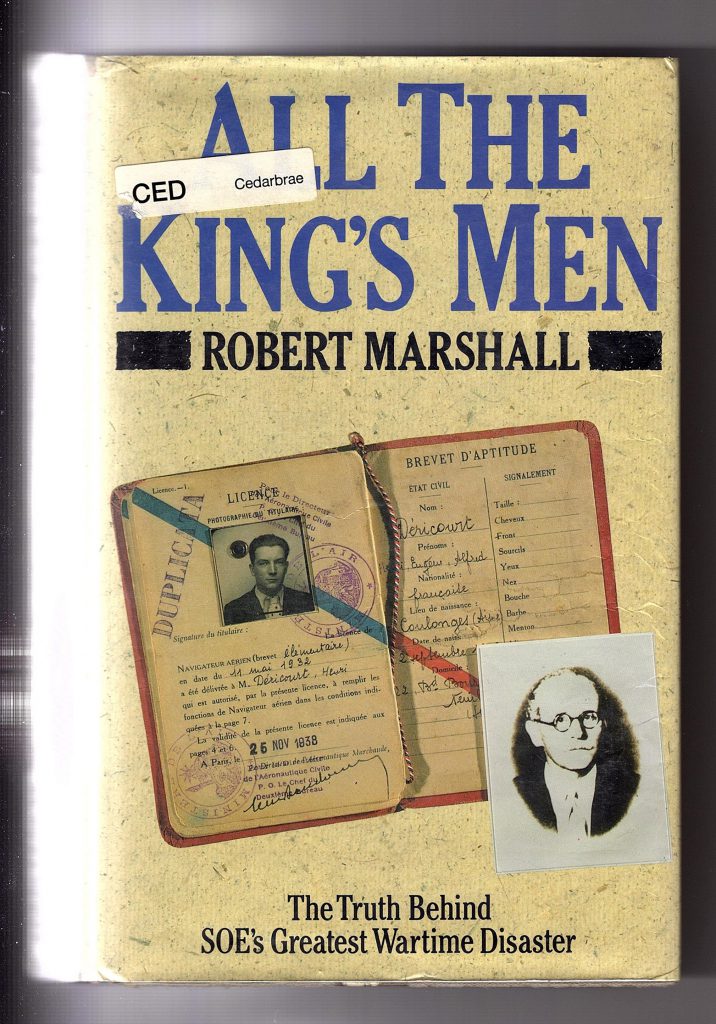
Robert Marshall’s book thus appeared, in 1988, as an asynchronous contribution sandwiched directly between the two versions of the authorised hjstory, in 1966 and 2004. It projects a very bold assertion, as it is subtitled ‘The Truth Behind SOE’s Greatest Wartime Disaster’, and the flyleaf proclaims: “It is the story of two men; Claude Dansey, deputy head of MI6, and Henri Déricourt, double agent extraordinaire, who was planted within the rival wartime secret service – SOE – at Dansey’s instructions, and from there began a terrifying twelve-month trail of destruction and betrayal that led to the loss of over four hundred British and French agents.” The reader is exposed to two highly controversial notions, one, that Dansey was responsible for the undoubtedly questionable recruitment of Déricourt by SOE, and two, that it was policy of deception and betrayal that led to the destruction of the Prosper circuit. Marshall dangled the notion of ‘double agent’ before his readers without specifying whether Déricourt was a Nazi agent who was turned by the British, or vice versa.
One of the major strengths of Marshall’s book is that he carried out his research when some of the participants were still alive, and he thus had direct access to many of them (‘interviews with over fifty veterans and survivors of the secret war’). One of its weaknesses is that he sometimes relied too heavily on what these persons told him, when many had reasons for dissimulating. (The archives were of course not available to him.) Maurice Buckmaster was one such unreliable witness, and critics have pounced on Marshall’s description that Churchill had requested an interview with Suttill when he returned to England at the end of May 1943, and at that meeting (which Buckmaster did not attend) Suttill was informed that the invasion at the Pas-de-Calais would take place during the first week of September. Research performed by Suttill’s son has shown that Churchill was out of the country at the time, and thus the meeting could not have taken place [but see below for further commentary]. He and his supporters thus feebly designate Marshall’s work overall as ‘fiction’.
Yet there may be some truth in Suttill’s being briefed by some officers with authority. Buckmaster, in They Fought Alone, wrote (p 186): “We had many conferences with Allied high-ups and then, a fortnight later, Francis returned to France.” Moreover, Buckmaster used the Churchill fiction to reinforce the instructions to Suttill when briefing other historians. In his 1988 work F Section SOE: The Story of the Buckmaster Network, Marcel Ruby quotes a letter that Buckmaster wrote to him on October 17, 1984, where Buckmaster stated that Churchill had asked Suttill to step up the networks’ activities even if this meant disregarding the agents’ personal security. Churchill, he wrote had added: “I must be able to show Stalin that we are doing our best to make the German divisions return from the East.” This was a monstrous lie, Buckmaster clearly trying to blame on Churchill a decision that had been taken lower down. But he presumably believed he could get away with it. Such are the problems in trying to dispel the fog of misinformation concerning SOE activities.
All The King’s Men is not without unique archival leads, however. For example, when Déricourt arrived in Scotland on September 7, 1942, he immediately declared that he had [sic, not the pluperfect ‘had had’] contacts with German intelligence, a claim he made at his trial a few years later. In an important footnote, Marshal reports that this fact was confirmed in 1958 by Lord Lansdowne, a junior Minister from the Foreign Office. The Foreign Officer, however, in a communication with Marshall, retracted this statement, declaring the Lansdowne was ‘incorrectly briefed’. Marshall gained corroboration of Déricourt’s claim from other sources, and identifies a series of files concerned with his arrival that were listed at the (then) Public Records Office, namely Z 7300, Z 9571 and Z 9958. On August 6, 1986 the Foreign Office told Marshall that the files had been destroyed some time ago. Verily, the records at TNA concerning Déricourt’s arrival in Gourock are sparse, as I shall report on next month.
Other interviewees, such as Harry Sporborg, who was deputy to Colin Gubbins when the latter was head of SOE Operations, and then SOE itself, come across as much more dependable, and Sporborg is quoted with some statements that must have caused tremors within MI6. For example: “Make no mistake about it, MI6 would never have hesitated to use us or our agencies to advance their schemes, even if it meant the sacrifice of some of our people,” and “It is the modus operandi of all double agents to provide thin material to begin with, coupled with an undertaking to deliver the earth tomorrow.” Marshall is insightful over such matters as the influence the London Controlling Section had over SOE, and a contrast between Oliver Stanley, who was replaced as its head by the more ruthless John Bevan. According to Marshall, Stanley resigned after the Dieppe raid. “The particular principle over which he [Oliver Stanley] felt so strongly was a suggestion that the SOE should be asked to deliberately misinform its agents in France to expect an imminent invasion. It was the kind of deception for which Stanley had no stomach,” he writes. It is insights like these which make his book so compelling.
The reasons for the replacement of Stanley are not clear-cut, however. Patrick Marnham initially questioned Marshall’s conclusion, since Stanley was ‘promoted’ to Secretary of State for the Colonies, having in May 1942 requested the Prime Minister for a return to conventional politics. Yet two years beforehand Stanley had declined exactly the same role (not a wise choice, one would imagine), and he was not actually confirmed in his new appointment until November, which suggests that the changeover occurred under some pressure. He had become very frustrated in his very clandestine role, and, temperamentally, he may have been a bit too upright and orthodox for the job. He was not informed about ‘double agents’, for instance, as Michael Howard informs us (p 23). Why so? Moreover, his wife died after a long illness in 1942, so he must have been emotionally shattered, and that might explain the long sabbatical in the summer of 1942. Marnham now agrees that Stanley was probably unsuited to the post, and that Churchill needed someone tougher.
I cannot do justice to the richness of Marshall’s narrative here, but simply recommend it as compulsive reading for anyone interested in the Déricourt saga. He uncovers Déricourt’s pre-war history, and his friendship with Nicolas Bodington (whom Dansey placed in SOE), and Karl Boemelburg, who later became a Gestapo officer in Paris. He skilfully outlines all the complex relationships of the F Section networks in France, how the Germans infiltrated them, and how suspicions about Déricourt were eventually communicated to London by Henri Frager. He concludes his story by giving a detailed account of the extraordinary trial of Déricourt at Reuilly Barracks, near Paris, in May 1948, where Bodington made his dramatic statement, saying the ‘he had total trust in Déricourt and recommended he maintain his contacts with the Germans’, probably thereby saving his friend from the gallows.
Marshall does not cleanly tidy up, however, the enigma of Dansey’s involvement. Was he merely naïve in believing that Déricourt might reveal useful information about the structure of the SD in Paris? Did he sincerely believe that Déricourt was already an agent of the Gestapo when he was recruited in London, but successfully ‘turned’? Did he really want to destroy much of the SOE F Section because it interfered with MI6 intelligence-gathering, or because Charles de Gaulle believed it was an intolerable insult to the latter’s Free French ambitions? Was he wickedly working behind the scenes with Bevan and the TWIST committee to betray the Prosper network for what he thought was a good cause, even though the Chiefs of Staff had given contrary instructions? And in what way was Marshall categorizing Déricourt as a ‘double agent’ – under control of which authority, and doubling for whom?
I have discussed some of these questions – especially the last – with Marshall himself, and we agree that, without a confirmation of exactly when Déricourt was given the codename B.048 (as Boemelburg’s 48th agent) it is impossible to determine who officially recruited the agent first – MI6 or SOE or the SD. He was more probably an amoral individual, trying to exploit anybody he could, and then trying to survive, and I shall explore that issue in my coldspur posting next month. I plan also, soon afterwards, to return to the many intriguing points that Marshall offers about COSSAC, the Chiefs of Staff and the London Controlling Section as they planned real and deceptive operations in May 1943. But what is intolerable is that Marshall’s valuable research should have been totally ignored by Foot, and the intrinsically vital issues disclosed in it left uninspected. And that is why it is so important that Patrick Marnham has picked up the baton with War in the Shadows.
Mark Seaman’s ‘Glass Half Full’
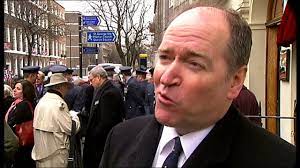
Seaman’s paper (cited above in the discussion of the release of SOE in France) merits a brief analysis, as much for what it does not say as much as what it does express. The precise role of Seaman in the government intelligence ‘machinery’ is something of a puzzle to me. He is variously described as an ‘historian’ attached to the War Office, or the Imperial War Museum, and now the Cabinet Office. He has written a few books on SOE and related matters, and contributed several article and chapters to books. Yet I have not been able to determine his academic credentials, or who actually employs him. He and Nigel Perrin appear to be used exclusively by the Times Literary Supplement to review books on intelligence, which means they have a dominant influence over discussions of questions concerning SOE.
I must declare an interest. It was Seaman who reviewed my Misdefending the Realm in the TLS. Alert readers may recall that I had to order a copy of my own book from amazon.uk and have it sent to Seaman’s address in Streatham, since my publisher had left for a holiday in India without telling me, and without leaving anyone to mind the store. (I do not believe Andrew Roberts has that problem.) Seaman performed a workmanlike job, although I doubt whether he read the whole book, as he completely missed its main points. But I hold no grudge, as I was delighted to gain any coverage at all. I thus treat him as an insider who has access to a lot of material, while I lay on him large responsibilities as some kind of ‘official’ historian.
I am not sure why Seaman wrote this piece: its conclusion is that ‘there is some cause for considering that the glass is half full rather than half empty’, which is not an insight likely to excite anyone. He provides a useful history of the evolution of SOE studies, rather in the manner in which I set out, although with broader coverage of SOE beyond France, in some areas providing detail that I have omitted, in others offering much thinner gruel. He has some informative observations on the role of the ‘SOE Adviser’, and how the first incumbent treated the job as a function more of obstruction (‘inhibiting research’) more than disclosure. Yet he utterly disappoints in his failure to fulfil the charter he set out in his Introduction: “The question has to be asked whether access to the records has inspired a radical improvement in the study of the subject”.
Is this a veiled insult to Foot? Not overtly, as he generally praises Foot. What is astonishing is the superficiality with which he treats the controversy over the disasters in France. He introduces the Foreign Office desire for ‘a more authoritative voice on SOE matters’ by referring to the allegations made in the media (books and press) in the 1950s and early 1960s that ‘activities in France had been mishandled’, and goes on to write that ‘the most persistent and resonant topics concerned the fate of captured F Section women agent, the activities of double agents and the alleged incompetence of SOE staff officers in London’. Yet he lists none of them, instead directing readers to a chapter he wrote in a rather obscure book of essays dedicated to M. R. D. Foot. His contribution is titled Good Thrillers, but Bad History: a Review of Published Books on the Special Operations Executive Work in France During the Second World War, a generalisation that might suggest that Foot was good, all the rest bad. It is in fact an unbalanced and inconsequential essay that makes a fleeting reference to All The King’s Men, but studiously avoids inspecting any of the serious matters with which Marshall’s book engages, such as the controversial role of Déricourt.
In Glass Half Full, Seaman makes a brief reference to Jean Overton Fuller, but lists only her first work, Madeleine. He has no room for Nicholas, or Fuller’s more challenging publications about Déricourt. Even more startling is the fact that he pays only symbolic homage to BBC’s TIMEWATCH: ‘The BBC ‘Timewatch’ programme has paid several visits to SOE . . .’ He refers neither to the original All The King’s Men episode, nor to Robert Marshall’s subsequent book of the same name. Thereafter he fades away with some brief references, including a rather dismissive dispatch of Leo Marks’ Between Silk and Cyanide. Those allegations he described earlier are simply forgotten, and he concludes his very professorial and condescending survey. ‘There is much work to do’, he writes, but it is not Seaman who is going to perform any of it. I shall re-examine this bizarre attitude in a later section.
The Foot-Suttill Collaboration
Major Francis Suttill’s son, also called Francis, in 2014 published Shadows in the Fog, a book dedicated to explaining the truth behind his father’s betrayal. It was re-issued as an updated and revised work as PROSPER: Major Suttill’s French Resistance Network in 2018. A few years beforehand, Suttill had developed a close relationship with the authorised SOE historian, M. R. D. Foot, and later worked with the so-called ‘SOE historian’ Mark Seaman, and it is these somewhat bizarre alliances that consume my interest in these last sections.
In February 2011, Francis J. Suttill co-authored with M. R. D. Foot, shortly before the latter’s death, an article in Intelligence and National Security titled SOE’s ‘Prosper’ Disaster of 1943. It is a strange piece: it defines its objective as seeking ‘to clear up what went wrong’ in the German mopping-up of the ‘Prosper’ circuit, yet describes the mystery as lying in French press speculation from the mid-1940s that PROSPER himself was responsible, as if no other analysis had been published since. Moreover, this claim assuredly misrepresents the target of French resentment after the war, which was the British Intelligence authorities rather than Suttill himself. This article asserts that fresh insights can be derived from ‘previously unused material in SOE and air ministry archives’, but represents a very narrow and selective trawling of the records.
The authors recapitulate the activities of Prosper in building his network, drawing attention to the careless practices of some of his agents (Gilbert Norman, Andrée Borrell and the Agazarians) in meeting in Montmartre to play poker, and also to the fact that confusion between Norman and the officer bearing the codename GILBERT (Henri Déricourt) often occurred. This gives Foot and Suttill an opening to place ‘the now notorious’ Déricourt in context, asserting that he was working for himself, neither the Germans nor the Allies. While that may be true, confirming the illusory power of the ‘double-agent’, their analysis becomes more suspect when they blandly declare that ‘he showed the Germans all the mail that passed through his hands’, with the result that ‘they thus secured a big advantage in interrogations’. Why such a treacherous act had become necessary for Déricourt’s survival, or the degree to which it contributed to the demise of Prosper, is not explored.
Yet it is their coverage of the role of the Prosper network in the STARKEY deception operation that is the most provocative section. Here the authors attempt to debunk the ‘legend’ that Suttill’s circuit was deliberately betrayed by the British, and Foot may have been looking for a last chance to absolve himself of his own deception over the affair. All the article says about STARKEY is that it ‘was mounted in too much of a hurry in summer 1943 to mis-persuade the Germans that an invasion of France was imminent and would take place in early September’, and that SOE played a minor role in the operation without realizing it. Their evidence for this claim is that the Mauritian Antelme returned to France in May ‘to organize food supplies and finances for a landing force’. The idea that a single SOE officer, working from the Paris area, could in some way contribute so effectively to the logistics for a multi-divisional assault in the Boulogne-Calais area is simply absurd.
Foot’s and Suttill’s exercise would have benefited from an examination of War Cabinet records, since they show a common confusion about the timing of the STARKEY deception plan. The initial plan for STARKEY (as a prong in the COCKADE deception plan) was not presented by General Morgan to the Chiefs of Staff until June 3. (In following Patrick Marnham’s references to Michael Howard’s account of deception at this time, I wondered whether Howard had misread the War Cabinet minutes of January/February 1943 when coming to his assessment of the early approval – that is, pre-STARKEY – by the Chiefs of Staff of such plans for a 1943 assault on northern France, but I realise now that I need to inspect other London Controlling Section records that Howard had accessed, and shall therefore return to this topic in a later posting.) Thus any initiative in May must have been sanctioned outside that operation. The authors also state that both men (i.e. Suttill and Antelme) ‘assumed that there would be a major landing in 1943’, and that ‘F Section did not know till July that it was to be postponed unto 1944’. If this is true (and it may not be appropriate to treat Section F as a monolith), Suttill and Antelme were being cruelly deceived. The decision not to stage an assault on France before 1944 had been taken some months before, and, as I have shown, Maurice Buckmaster was disgracefully equivocal about what he knew, and what he had told Suttill, when he wrote his memoirs.
More fascinating still is what Foot and Suttill write about STARKEY. Sir Michael Howard told Foot in February 2004 (i.e. just before the revised version of SOE in France came out) that John Bevan, the head of the London Controlling Section responsible for deception, had in turn told Howard that he had been ‘deeply unhappy about the unintended consequences of the operation for the resistance movements’. This statement is again left unexamined. I managed to ask Suttill what the implications of it were, and he wrote me a rather confusing reply that I shall pick up when I analyse his book. It points, however, to a rather startling conclusion, namely that Bevan may have been carrying out a rogue deception exercise, retrospectively gathered under the STARKEY umbrella, that did indeed involve SOE in France, and severely damaged the resistance infrastructure.
The article peters out after these highly controversial disclosures. The authors move to place most of the blame on the unfortunate Norman, who is claimed to be the sole author of the infamous pact that Suttill and Norman were supposed to have signed with the Sicherheitsdienst and the Gestapo that, if the subordinate agents handed over their arms, and led the Germans to the arms dumps, they latter would be spared the death penalty, which would still be meted out to the circuit’s leaders. They conclude: “It is irresistible to conclude that Norman made it up, as a cover for his own co-operation with the Germans.” Thus the point of the piece seems to be to absolve Suttill himself at the expense of his fellow-officer, while ignoring the implications of the more complex issues, and thus hoping they will go away. It is all a shabby epitaph to Foot’s less than honourable work.
Yet Foot might have tried to leave some subtle clues to redeem himself. In 1995, the Oxford Companion to World War II appeared, for which Foot was Consultant Editor to the General Editor, I. C. B. Dear. Foot provided entries for Maurice Buckmaster, Colin Gubbins, and Claude Dansey, while Dear himself provided that for Henri Déricourt, On Buckmaster, Foot wrote: “He was occasionally outwitted by the Gestapo”. A sentence on Gubbins starts as follows: “Although he was sometimes outmanoeuvred by Dansey, he showed unexpected gifts of diplomacy in his dealings with governments-in-exile . . .”. Dansey is characterized in these terms: “Although he had a great gift for rubbing other secret staff officers up the wrong way, he had several successes in persuading the governments-in-exile to provide him with spies for Europe”. Yet Déricourt’s entry is the most shocking and startling of all: “French airman, pre-war *V-man for the Nazi security service, the Sicherheitsdienst. He may then have been recruited by MI6, which knew of his SD connection, brought to London in September 1942 to join SOE’s French section . . .”
[* A cross reference to the entry on ‘V-man’ leads to a definition that a Vertrauensmann (trusted man) was an agent recruited by the Abwehr and the Nazi security service. It continues, citing a Sicherheitsdienst instruction issued in 1937, that such persons were to be recruited ‘among those having as little culture, common sense, objectivity, and logic as possible’, but then, astonishingly, again highlights Henri Déricourt as an example of how the rule was often ignored.]
Why would Foot, who provides lengthy entries on Deception, and SOE, as well as a brief item on Double-agents, delegate the task of compiling the somewhat speculative entry on Déricourt to Dear when he (Foot) was the expert on F Section of SOE? Moreover, the significance give to Déricourt seems totally out of proportion. Neither General Morgan, nor John Bevan, nor London Controlling Section – nor of course the Twist Committee – was awarded separate entries, and one has to delve into COSSAC before finding any reference to COCKADE. Neither the SOE entry, nor the long essay on France (by Roderick Kedward) helps to explain what significance Déricourt carried in the conduct and outcome of the war. It is all delightfully – and maybe deliberately – vague, although the overall picture at which Foot hints is highly provocative.
‘PROSPER: Major Suttill’s French Resistance Network’
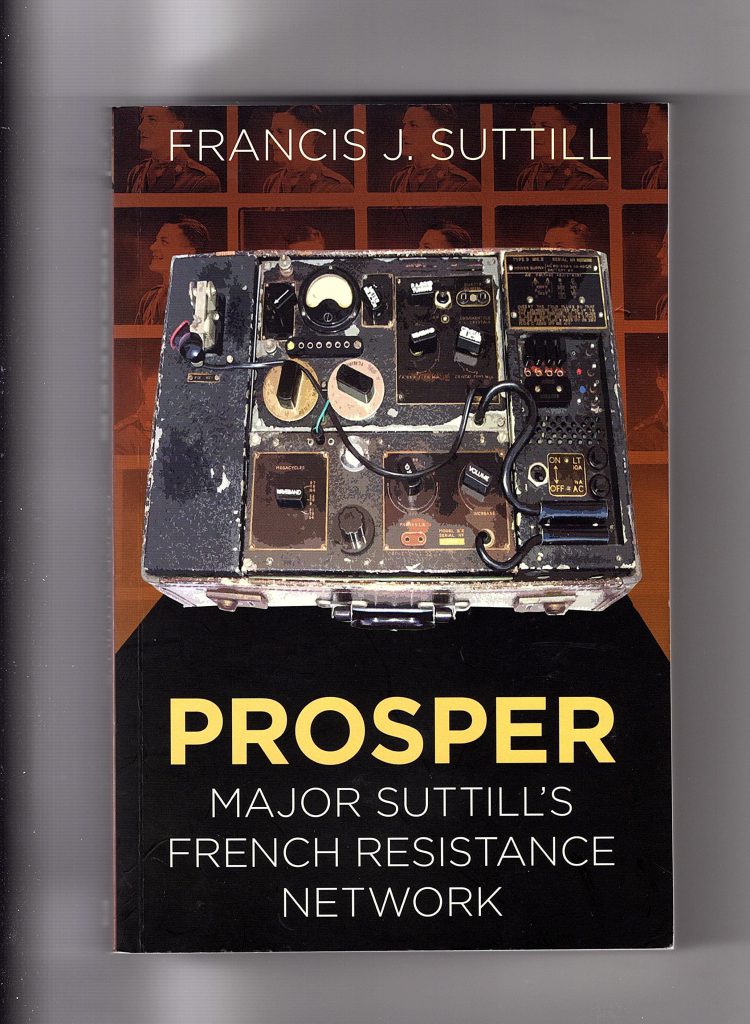
In his book dedicated to the memory of his father, Francis Suttill has painstakingly compiled a valuable record of the build-up of the Prosper network. Yet a large part of his work is really of little relevance to the central point of its betrayal, recording in detail the succession of drops, landings and infiltrations into France in the last few months of 1942 and the first half of 1943. The overwhelming feature of vital importance, however, is the continued emphasis on the beliefs of Prosper and his team that an invasion was imminent when Suttill returned to France from London on May 21. This story has its origins in instructions to SOE as far back as November 1942, when it was hinted that it was ‘unlikely that invasion could be undertaken until the early spring of 1943’ [sic]. Yet all this happened before the Casablanca Conference that took place between January 14 and 24, 1943, when the Allies (without Stalin’s presence, although Suttill has the Generalissimo attending) made firm decisions to shift emphasis on assault plans to Italy and defer any entry to northern France until 1944 – with some vague provisos given for reviewing plans if the Germans unpredictably collapsed. Thus, at some level, SOE (and especially Section F) was being willfully deceived by the Chiefs of Staff.
Thus Suttill writes (p 191) that his father visited Trotobas in Lille when he arrived in France to pass on instructions: “These confirmed that everyone was still anticipating an imminent invasion as the instructions are remembered as ‘Attack in June, July, August, as quickly as possible in view of the events which can take place at any moment.’” (The source is a Frenchman, L’Heureux.) On June 13 (or soon afterwards) Suttill instructed Culioli to continue arranging receptions, as he felt that the invasion was imminent. What it meant was that an increasing number of SOE officers and agents, and their associates in the resistance movement, were caught up in clandestine importation of weaponry just as the Germans were exploiting the security holes that had been allowed to appear because of faulty tradecraft, the treachery of Déricourt, and the dissimulations of Bleicher in the Abwehr that had managed to suborn Roger Bardet.
I shall skip over Suttill’s account of the arrests, and move to his intriguing Chapter ‘Theories and Lies’, where he sets out to debunk the ‘conspiracy theories’ that inevitably develop ‘in the absence of the truth’. Suttill introduces the COCKADE plan (but does not date it), and then provides a brief history of relevant contributors, from the head of COSSAC, General Morgan himself, through Buckmaster and Fuller, as well as some much romanticized narratives by Barry Wynne and Charles Wighton (the pen-name of Jacques Weil). Suttill then moves on to Foot’s History, but prefers to cite the 1966 edition that denied any use of SOE in deception, and he next confirms Morgan’s recommendation that resistance groups not be encouraged to adopt any greater activity, as it would be counter-productive. Suttill identifies memoranda from June 16, July 18, and July 22 that show how the Chiefs of Staff approved this policy. He then observed: “It was only after this date (a month after the arrest of my father) that Buckmaster, and the other SOE country chiefs, were told that the invasion had been put off to 1944.”
Yet Suttill somehow tries to exploit the obvious fact that SOE was misled before the COCKADE plan was revealed to try to show that undue activity by resistance groups could never have happened. He dismisses Anthony Cave-Brown’s claims that Prosper and his agents were deliberately misled: he expresses his very positive first reactions to All the King’s Men, but then quotes Foot’s comment that it was ‘an imaginative fiction, an ingenious story, but not a true one’, discounting it because it relied too much on private information, such as in the story that Boemelburg, Déricourt and Bodington knew each other before the war. Again, his conclusion is that SOE was justifiably used in the spring of 1943 since the decisions of the Casablanca Conference were not translated into an action plan until April 1943. “ . . . So the existing deception strategy had to be continued to protect the value of the double agents passing false information and to keep the Germans constantly confused,” he writes. But his father did not think he was part of a ‘deception strategy’: he was told that the real thing was imminent. Furthermore, Suttill provides no sources for the execution of this strategy, with its unnamed double-agents. Was this the TWIST Committee?
Another area where Suttill falls down is in his analysis of the outcome from the Casablanca Conference. He makes the claim that the sacrifice of the French resistance would have been pointless, and a deception exercise to convince the Russians of ‘Second-Front’ resolve nugatory, since ‘the postponement had already been agreed at Casablanca by Churchill, Roosevelt, and Stalin in January 1943’. Stalin did not attend Casablanca, however, and the War Cabinet Minutes reinforce the fact that Churchill, throughout the first half of 1943, was desperate to lead Stalin to believe that an assault on Northern France would occur in 1943. Stalin surely picked up what was really going on from his multiple spies in various government ministries, but that is another story.
Lastly, Suttill brings up the matter that the arrests may have been the ‘unintended consequences’ of the deception plan, and mentions that the ‘exponential increase in drops to the circuit in June was set to continue in July’. Yet he does not examine why all this hectic activity of weapons-dropping had been allowed to continue unless it had been a deliberate part of a deception plan. His weak explanation runs as follows: “Some visible increase in resistance activity in the northern half of France was compatible with what the deception planners wanted and so the fact that an increase was already happening meant that there was no need for them to become involved with SOE to arrange such an increase.” The logic is astounding: SOE was importing arms (with the help of Bomber Command, who was loth to supply planes for such purposes) in the belief that invasion was imminent, even though the Chiefs of Staff disapproved of such activity; Bevan’s team allowed this to happen since it contributed clandestinely to the overall deception goals, even though the deception plan had not yet been approved; SOE chiefs, while knowing that the invasion had been called off, and that the Prosper circuit had been penetrated, did nothing to arrest the arrival of weaponry.
Suttill cites what Bevan told Howard shortly before his death, namely that he ‘still had feelings of guilt about it [the collapse of the Prosper organization] as he considered that this collapse had resulted from pressure on the circuit to increase their activities for what they thought would be an imminent invasion.” (The ‘their’ clearly refers to the members of the circuit, Bevan excluded.) He added that he thought the risk would have been acceptable if there really had been a landing planned in 1943, implying, therefore, that it was unacceptable since SOE had been deceived. Moreover, Suttill compliments Bevan on his hindsight that the collapse of the circuit had been counterproductive to both STARKEY and the overall strategy. I found this an extraordinary conclusion: Suttill seemed to be reinforcing the claim that Prosper had been sacrificed, even if it was made more by a lesser charge of thoughtlessness and callousness than through malevolent betrayal.
I asked Suttill (via email) how he interpreted the ‘unintended consequences’ of the operation, and what the ‘intended consequences’ of it had been. After partially disowning the article he co-authored with Foot, indicating that he made a few adjustments to Foot’s text (even though his name appears before Foot’s as author), he finessed my question by merely paraphrasing the statement he had made in his book, and gave me a rather rambling answer: “Briefly, as the French Section was not told until the end of July 1943 that the plan for an invasion that year had been deferred, they were still working on the assumption that it was imminent. The deception planners, knowing that SOE was therefore planning to continue increasing drops to France, thought this would be useful as part of their plan but the deception planners had not asked SOE to do this as a deliberate part of their plan and it became irrelevant anyway at the end of June with the collapse of the Prosper circuit.”
I showed this message to Patrick Marnham, and we agree that Suttill is reluctant to face up to the truth. The French Section could not work on ‘assumptions’: it received clear indications during May and June that the invasion was imminent, and could not have worked independently without considerable RAF support. Suttill claims here that Bevan had not asked SOE to continue with their airdrops, yet he asserted in his book that Bevan told Howard that the Prosper circuit had indeed been put under pressure to increase its activities (p 285). SOE did not take its orders from ‘deception planners’ in any case (unless a cowboy operation was taking place behind the scenes). SOE received direct instructions from the Chiefs of Staff, but knew that Déricourt had been in communications with the Sicherheitsdienst. As Marnham put it to me in an email: “The Resistance and F Section were encouraged to put their head in a noose”. For some strange reason, Suttill appears to believe that his account dispels any possible accusation that his father’s circuit was betrayed by domestic ill deeds as much as by German counter-intelligence.
Mark Seaman’s Final Judgment
While Suttill hooked in M. R. D. Foot at the beginning of his project, he succeeded in reeling in Mark Seaman at its conclusion. The latter has provided a flattering Foreword to Prosper. In this he signs himself as ‘SOE Historian’: it is not clear what his qualifications are, whether this is an official title, or whether he prefers to describe himself in that way above his other interests, or whether he merely considers himself an SOE historian like all the rest of us who dabble in this sphere. As Katrina Gulliver wrote recently in the Spectator: “You’d be surprised by the number of ‘historians’ whose qualification seems to be liking books about Napoleon – and who get quite shirty if you suggest someone with a PhD in the field might have more claim to the title.” Mr Seaman was awarded the MBE in the Queen’s Birthday List of 2014 for ‘services to the history of espionage’: it is not clear to me whether he received this award for simply doing his job (since he has is currently described as ‘an historian with the Cabinet Office’, who previously held a similar job with the Imperial War Museum). His publications have been meager, and one can only wonder what he does is his official capacity if he does not write history.
In this Foreword Seaman gives the inappropriate impression that he wants to close down historical inquiry into this matter. Moreover, he offers a very unprofessional account of what went on, and of his assessment of Suttill’s work. I present a few examples:
i) “As speculation grew on both sides of the Channel that an Allied invasion was imminent, the increased recruitment of local personnel and the delivery of stores by the RAF’s supply drops began to turn PROSPER into a veritable army.” No explanation is given of the causes for the speculation, no indication of why the RAF was increasing supply drops, no dates, and he presents the great hyperbole in categorising a penetrated network as a substantial military force. As reputable historians (e.g. Stafford, Wieviorka) have pointed out, the value of an untrained and immobile secret army, lacking heavy equipment and facing the regular formations of a professional military force, was accepted by the Chiefs of Staff and Colin Gubbins as being almost negligible.
ii) “In the 1970s a series of revelations began to emerge about intelligence in the Second World War and, in particular, the British exploitation of deception stratagems. Speculation began to be voiced that PROSPER had been sacrificed on the altar of operations BODYGUARD and FORTITUDE, the schemes devised to mislead the Germans of the time and location of the Allied invasion of the Continent.” More vagueness, and excessive use of the passive voice. Seaman does not identify these ‘revelations’ (were they official, and accurate?). He does not identify who voiced the speculation, while his comments about BODYGUARD and FORTITUDE are massively anachronistic, since those operations were not conceived until after Suttill was arrested. The plan for BODYGUARD was not presented to the Chiefs of Staff until December 25, 1943 (Hesketh’s FORTITUDE, p 17): if Prosper had been sacrificed, it was on the altar of COCKADE and STARKEY.
iii) “While others might have drifted into speculation about what personalities might have thought or said, the story has an exemplary grounding in fact derived from a mass of documentary evidence and the oral testimonies of survivors.” Who are those others? And did they drift into speculation, or not? Why is their evidence assumed to be valueless? Suttill indeed shows that he has delved into many archives thoroughly, but he ignored many that were pertinent, such as Déricourt’s MI5 files, and War Cabinet records. Oral testimonies contain their own dangers, as Maurice Buckmaster has taught us. Seaman fails to note that Suttill’s account is not universally ‘grounded in fact’, since it places Stalin at Casablanca.
iv) “This book will surely be the definitive account of Francis Suttill and the tragic story of his PROSPER circuit.” No, it will not. Promoting ‘definitive accounts’ should be the bane of the professional historian, as further evidence will always come to light. What about the TWIST Committee, Mr Seaman? Suttill’s account is so partial, so selective, and so problematical, while at the same time encouraging further researches by the obvious self-contradictory statements that he makes about deception operations, that the story will have to be revised.
v) “The mistakes and failings of the British agents and their French colleagues are generally characterised as human weaknesses not treachery, although such a word still seems applicable to the double agent Henri Déricourt.” More use of the passive voice: by whom are these characterisations ‘generally’ made? And given Déricourt’s dominant role in the whole affair, if he was a ‘double agent’ (an idea that Seaman does not explore, leaving his readers to decide whether he was a ‘double-agent’ for the Germans or the British), the disposal of the ‘treachery’ phenomenon would seem to be a trifle hasty.
vi) “Secondly, it finally puts to rest a 70-year-old debate and, one hopes, will stifle the persistent, indiscriminate conspiracy theories that have continued to besmirch the memories of a group of brave, volunteer secret agents who risked their lives for the liberation of France from Nazi tyranny.” Of course it does no such thing, despite Seaman’s lofty pronouncements from his bully pulpit. Trying to banish ‘conspiracy theories’, as if they were inherently evil, when large traces of conspiracy and deception are admitted by Suttill himself, is the behaviour of a charlatan. Such investigations, moreover, are not intended to, and do not in practice, ‘besmirch’ any of the SOE heroes, but are simply vehicles for reducing the fog of disinformation that Seaman’s employers have tried to deploy over some dedicated and objective researchers.
Duncan Stuart, the last ‘SOE Adviser’ added his endorsement of what Seaman wrote. But Seaman’s text is an item of propaganda, not history.
Conclusions
This article has referred to a set of minimally explained phenomena, namely: Selwyn Lloyd’s admission of misdeeds by SOE; the obstructiveness of SOE adviser Boxshall; the unorthodox recruitment of Déricourt by SOE or MI6; SOE’s tolerance of Déricourt’s contacts with the Sicherheitsdienst; the numerous descriptions of Déricourt as a ‘double agent’ that unavoidably cast questions over which intelligence force he was ‘doubling’ for; an apparent maverick deception operation by Bevan of the London Controlling Section; Bevan’s subsequent regrets over the ‘unintended consequences’ of the STARKEY exercise; the secret proceedings of the TWIST committee, which was stated to have manipulated ‘double agents’ in the cause of deception; the testimony of SOE officer Harry Sporborg, who investigated the Déricourt business at the time; the equivocal comments by Mackenzie and Foot about SOE’s contributions to the deceptions of Operation STARKEY, including Foot’s assertion that agents may have been casually sacrificed in the cause of disinformation; Foot’s clumsy reference to Suttill’s meeting with Churchill; Suttill’s acknowledged belief in May 1943 that an assault on northern France was imminent; the BBC’s broadcasts to France that encouraged the same idea; SOE’s premature supply of arms to the French Resistance in contradiction of instructions from the Chiefs of Staff; the lack of a decision to withdraw members of the Prosper network when SOE knew it had been penetrated; Bodington’s flamboyant rescue of Déricourt at his trial; the restrictions placed on the authorised historian, Foot, and his subsequent disclosures in the Oxford material; and the duplicity of Buckmaster in his memoirs and statements. One might add to this list the summary execution of Kieffer of the Sicherheitsdienst and the timely accidental death of Boemelburg of the Gestapo, the elimination of these key characters preventing their giving witness at Dricourt’s trial.
Their interpretation of these events divides the establishment (Suttill, Perrin, Seaman) from the conspiracy-theorists (Marshall, Marnham, Percy), while Foot somewhat straddles the two camps. The establishment believes that any possible theory about SOE manipulation of Resistance forces is a cruel hoax, and somehow besmirches the reputation of those who lost their lives, as if it were more honourable for Prosper and his colleagues to have perished because of their carelessness and poor tradecraft than by the machinations of remote deception units. They thus regard all attempts to explain the mysteries as ‘fiction’. The conspiracy-theorists attempt to explain what is assuredly a conspiracy of sorts by analysing closely the remaining evidence, looking for a pattern of clues that might shed light on some bizarre and disturbing actions. They are dogged and patient, accepting that archival evidence is vital in moving their case forward, but strongly affirming their belief that ‘the last word’ on any historical event can never be written.
The archives can still reveal startling new facts that challenge the old orthodoxies. In War in the Shadows, Patrick Marnham revealed how an apparently inconsequential handwritten note by ‘Tar’ Robertson indicated his close familiarity with Henri Déricourt. In next month’s posting, I shall explain how a careful analysis of Déricourt’s MI5 files displays some breathtaking new information about his recruitment and status.
(I thank Patrick Marnham and Robert Marshall for providing me with feedback on earlier versions of this article. As I was making finishing touches to it, I gratefully received from Mr. Marnham the paperback edition of War in the Shadows, just published, which includes a vital new Postscript containing references to research on coldspur, as well as to information coming from other readers that reinforces the theory of SIS-led deception. I urge those of you who have not bought the hardback edition to acquire this item.)
This month’s Commonplace entries can be seen here.

